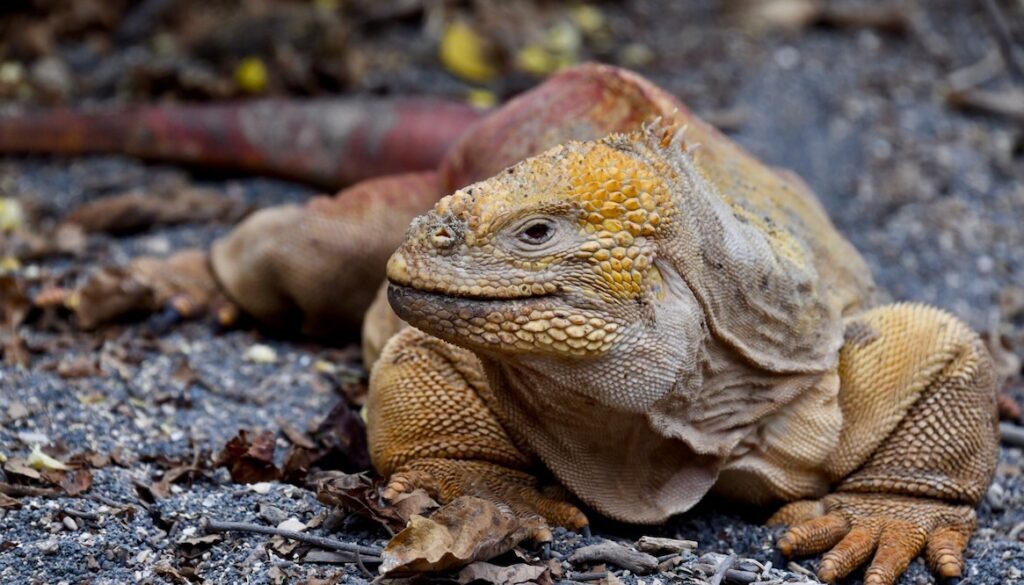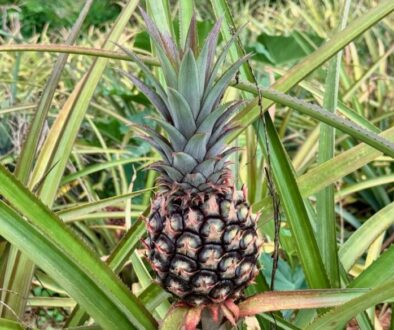Incredible Galapagos Wildlife Encounters in August
It’s no secret that Galapagos is heaven for wildlife enthusiasts. Rightfully so, because it is home to truly fascinating and thriving populations of unusual creatures only found on these islands. But sadly, most of us have no clue what the fascination is all about. What can be so unique about wildlife? What to expect in Galapagos or how to go about enjoying it?
In this post, we will share photos of a few of the incredible animals we came up close and personal with. We’ll also share a few surprising things we learned about animals and birds in the Galapagos. We will demystify the Galapagos and how you can make the most of it in a series of articles in the future.
Few people realize that Galapagos is a remote extremely inhospitable ecosystem. Eons ago, a few species made their way from South America across 600 miles of saltwater, drying winds, and intense sunlight. Many of the species of animals, plants, and marine life arrived here by accident, hitching a ride on the waves as larvae or swimming long distances. Some strong flying sea birds still find their way to these volcanic islands. Irrespective of their travel style, upon arrival they found no fresh water or food on these islands. Like any immigrant, they adapted and made themselves at home on the Galapagos islands. The migrant animals and birds adapted to become giants or dwarfs or evolved into different shapes. They changed very fast in ecological terms. Now, most of the species on this volcanic archipelago are endemic to the Galapagos island and only found here.
On our week-long trip, we learnt the biology, ecology, environment, and much more from the most amazing naturalists on the expedition. Now, I present our favorite photos of a few birds and land species that we found on our epic trip aboard the Quasar Evolution expedition.
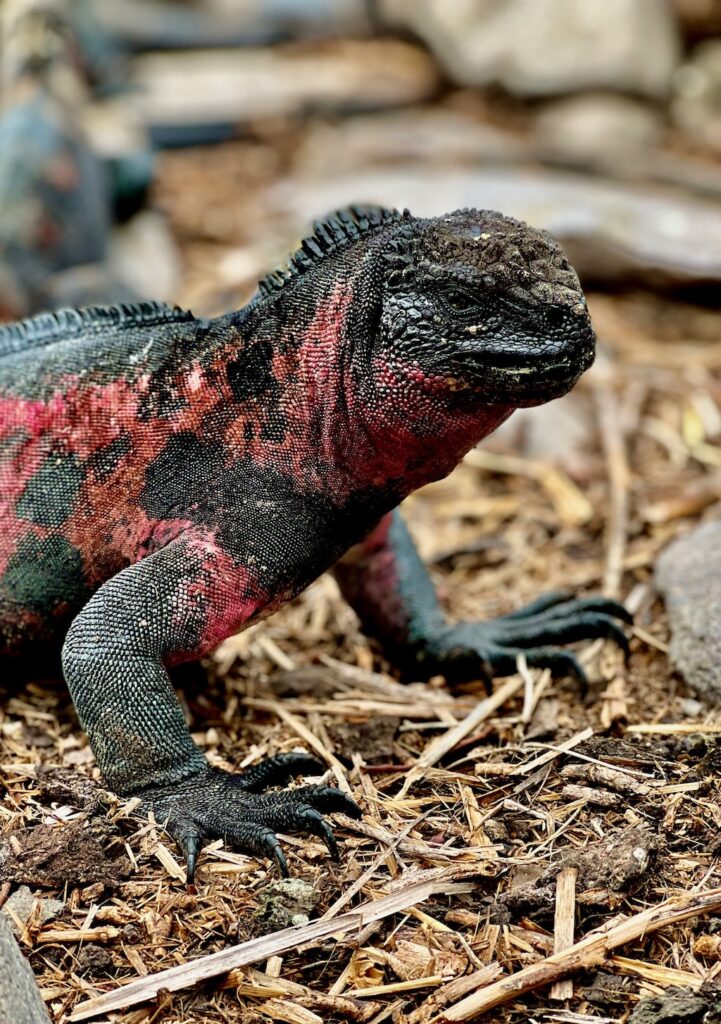
Galapagos Marine Iguana
Iguanas are arguably one of the most unique endemic phenomenon in the Galapagos.
The marine iguana may look ugly to some, but they are the only lizard in the world with the ability to live and forage in the sea for algae. They are also one of the few descendants of ancient dinosaurs, that are still around despite many extinctions.
Christmas Marine Iguana on Española Island
Galapagos has several subspecies of iguana, each evolving separately on different island ecosystems. For example, iguanas on Isabela and Fernandina islands are the largest. The adults are black for most of the year. But, the male iguanas take on different colors during mating season. Marine Iguanas on Fernandina turn dull green and brick red. On Santa Cruz, they become red and black. The most colorful iguanas are on Española island. They turn bright red, black, green, and cream, hence the nickname of Christmas Iguana.
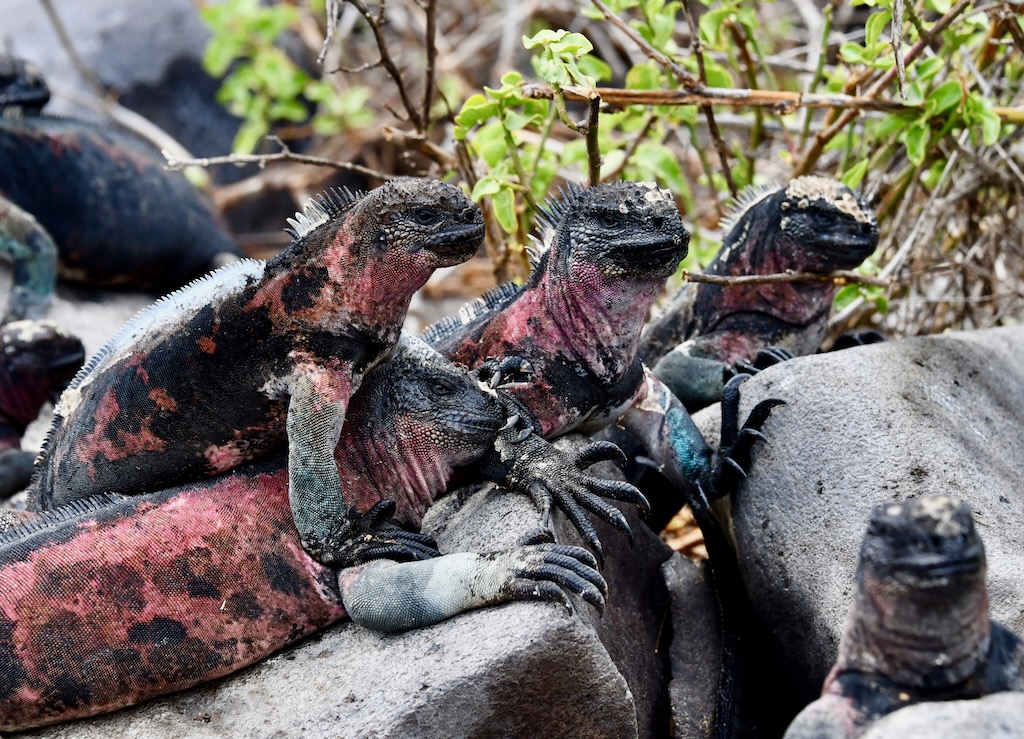
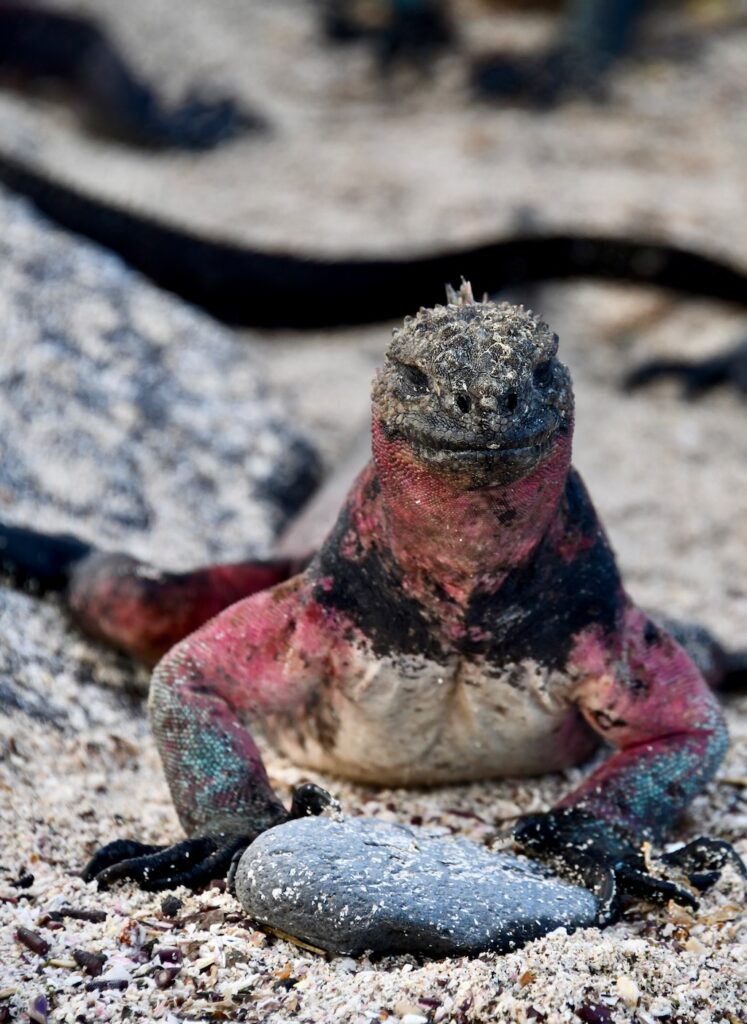
Marine iguanas mainly live in colonies on rocky shores where they bask in the sun, after visiting the relatively cold water for food. It’s fun to watch them hanging out on land as they climb on top of each other, giving intense stares, and spitting large sprays to remove salt from their body.

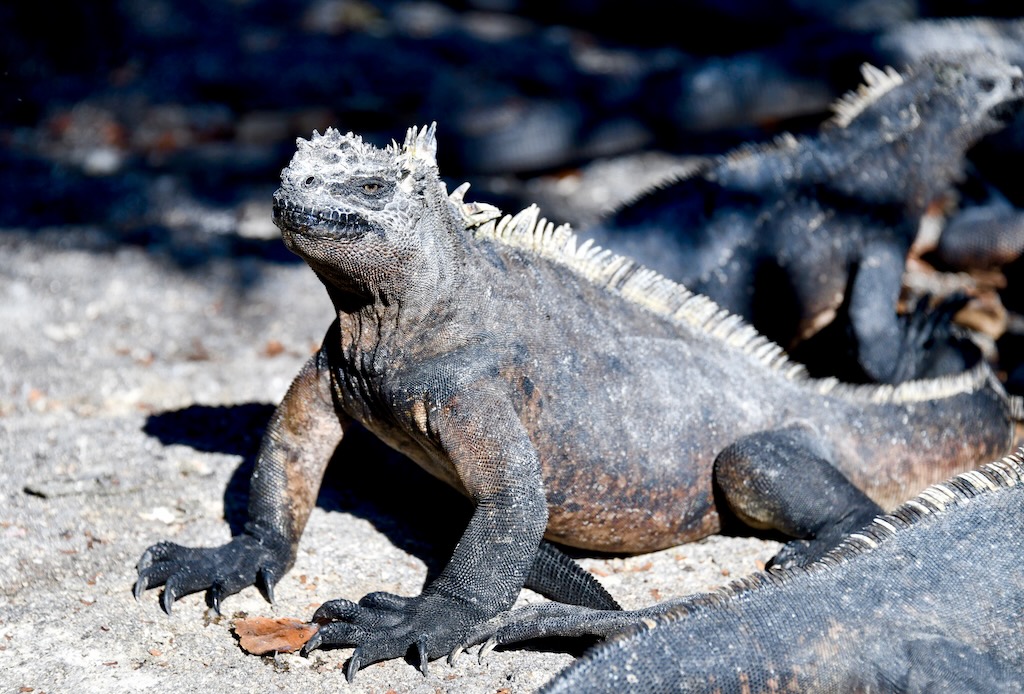
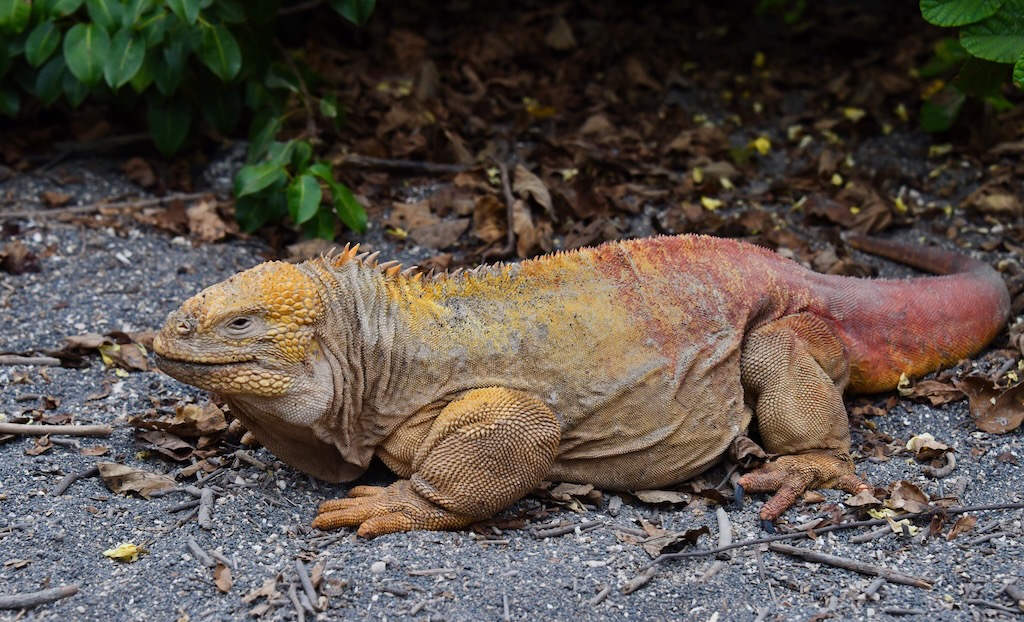
Land Iguana in Urbina Bay
One of the three 3 land iguana species is found on Urbina bay, a fascinating area of land mass that rose up from the shallow sea floor in 1954, with white coral still hanging on. The area has many unusual plant and animal species including giant tortoises, flycatchers, Darwin’s finches, mockingbirds, and land iguanas.
Land iguanas in Galapagos evolved from the same ancestor as the marine iguana but grew to be giants and stayed on land. I think they have the prettiest yellow, beige and red color scale. They look are scary dragons but they are gentle herbivores.
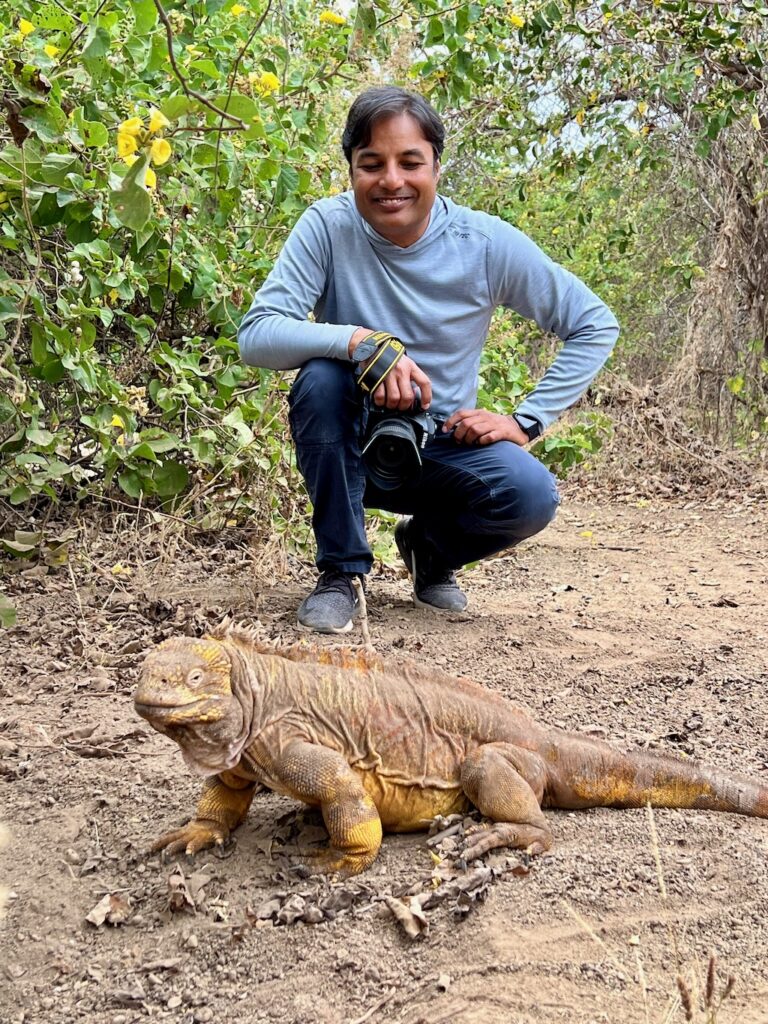
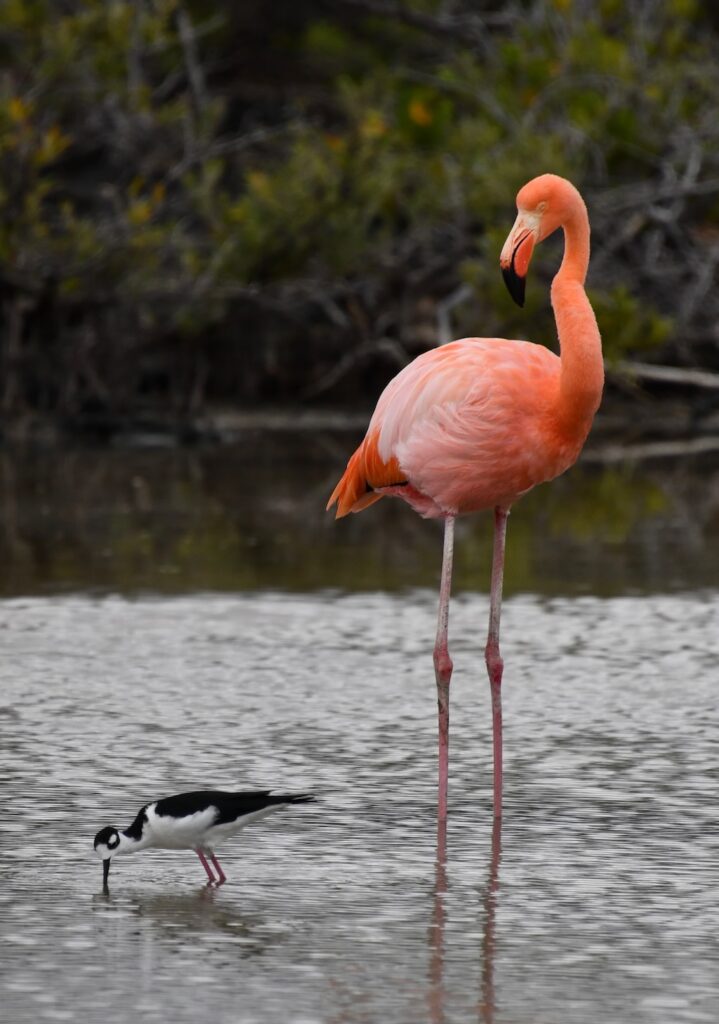
Pink Flamingos
The vibrant pink flamingos of the Galapagos are smaller (dwarf) than their continental cousins but more intense in color. Their color comes from a diet of crustaceans and shrimp, which contain carotenoids, a pigment that causes the flamingos to maintain their bright pink color.
We saw Galapagos flamingos flying to a pond on Bachas beach on Santa Cruz island, followed by a feeding period and long rest.
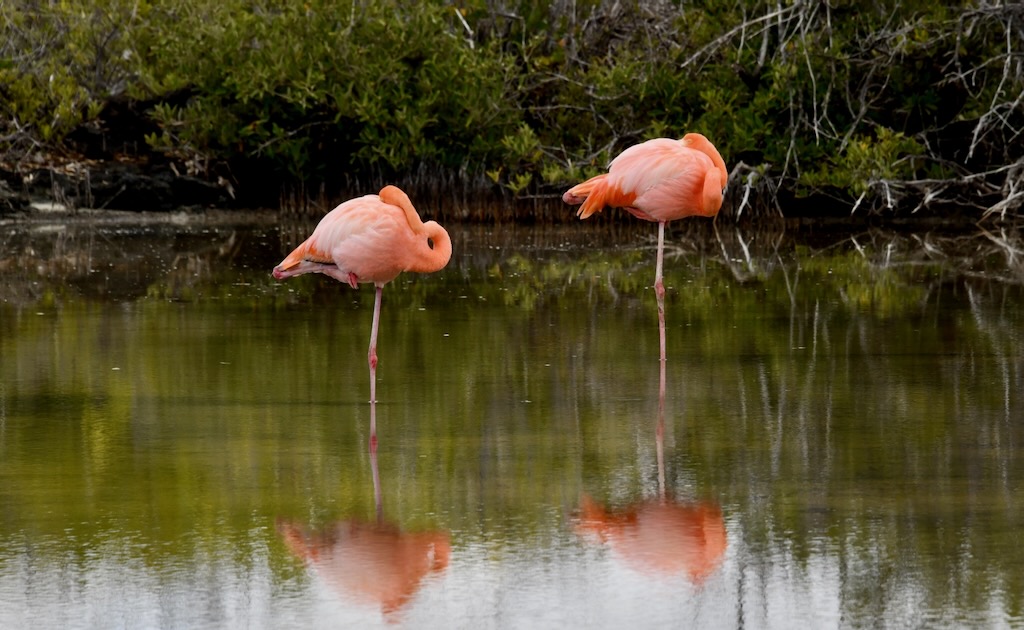
There are a few fun things we learned about the Galapagos Flamingos –
- Flamingos are very social birds. Colonies of tens of thousands are common. However, they are very shy of humans.
- Galapagos Flamingos have a poor sense of smell but keen hearing. So be super quiet around them, especially when they’re resting.
- Flamingos eat with their head upside down. Their beaks have lamellae (thin, flat membranes) that filter the mud, leaving insects, shrimp, crustaceans, etc. in the mouth.
- The flamingo population on the island has gone down from 700/800 to 300/400 because of drought conditions and feral cats destroying hatchlings.
- In the Galapagos male and female flamingos look the same. But, the young ones are born white with pink legs. Their pink color comes in 2-3 years, from their diet of crustaceans or shrimp.
- Galapagos flamingos lay one egg every 2-3 years. The couples are monogamous and they care for the young ones together. They take turns incubating the egg for a month and a half. After hatching, groups of Galapagos flamingos work in concert with each other to protect and care for their young in a type of flamingo “daycare” known as a crèche.
- There are five species of flamingoes around the world. We’ve seen them in Galapagos, Andes, Chile, the Caribbean, Florida, and Kenya. Galapagos flamingoes come from Central America but have evolved to be smaller and pinker than their ancestors, mostly because of their diet.
Galapagos Flamingos Nesting on Rabida island
It was exciting to see Galapagos flamingos returning to Rabida island for nesting in 2022, for the first time in 3 decades, possibly because of efforts at removing feral cats and rats from their habitat.
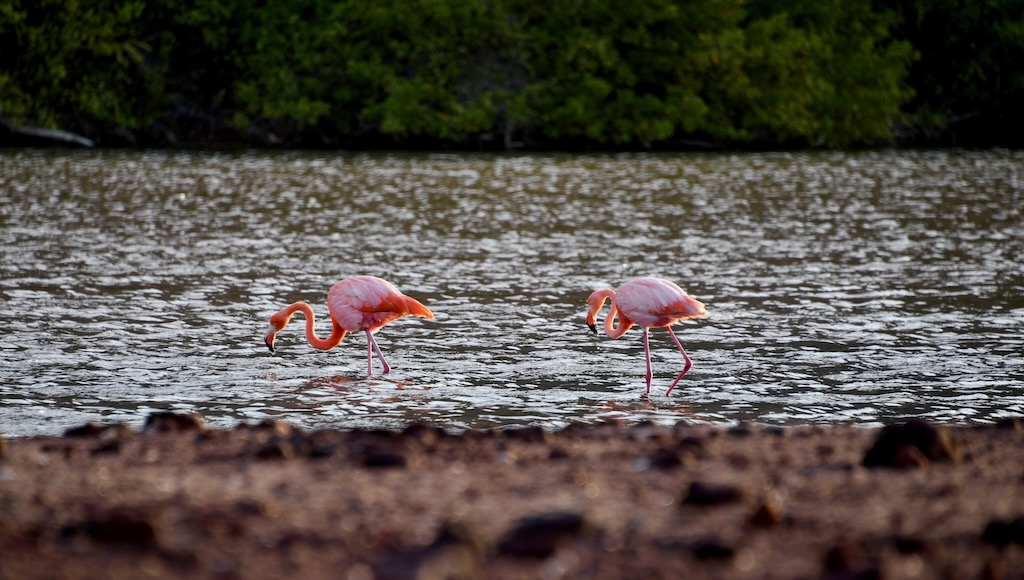
Sea lions were the most playful and engaging of all wildlife we saw in the Galapagos. We saw them on beaches, on rocks, and in the water. They enjoyed playing with us humans and other animals, including sharks! We found the Galapagos sea lions to be very elegant, swift, and naughty! Check my video of the sea lion teasing a shark on Instagram.
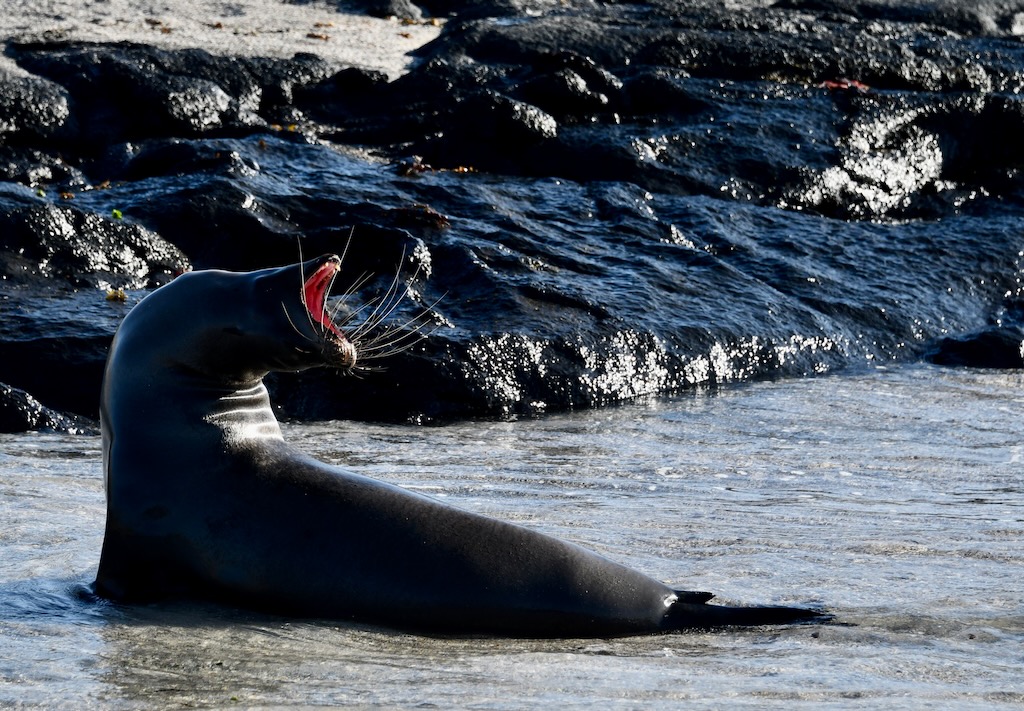
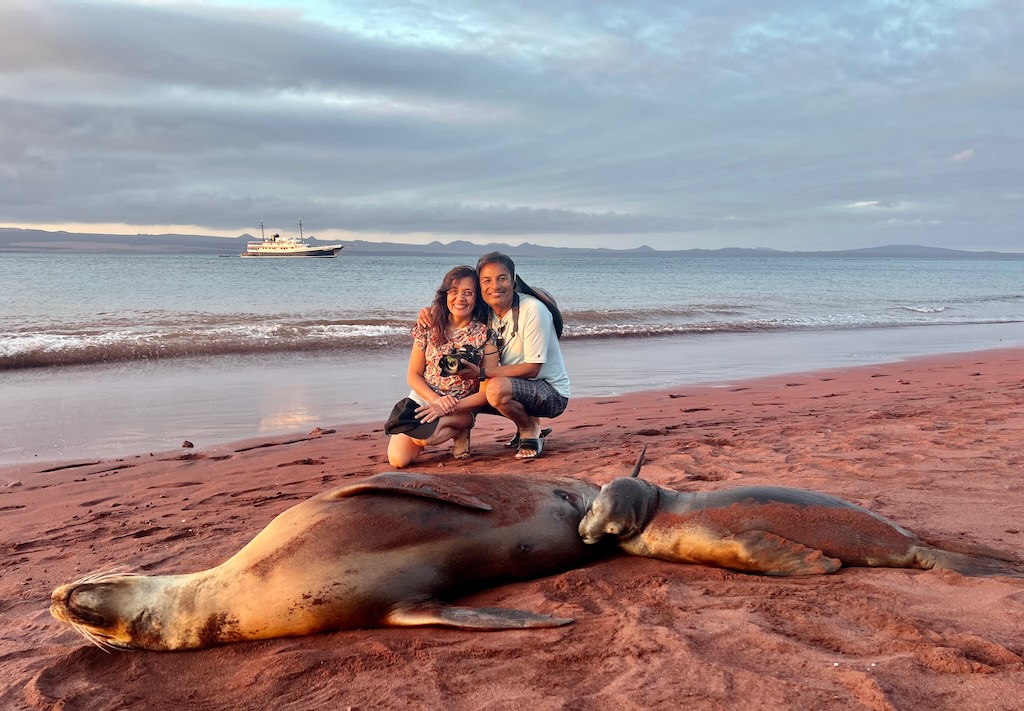
Baby Sea Lions in Galapagos
In August-September, many baby sea lions hang out on beaches in the Galapagos islands, playing with other babies and adults. That way mommy sea lions can go fishing for days.
Watching the baby sea lions with families was a special treat.
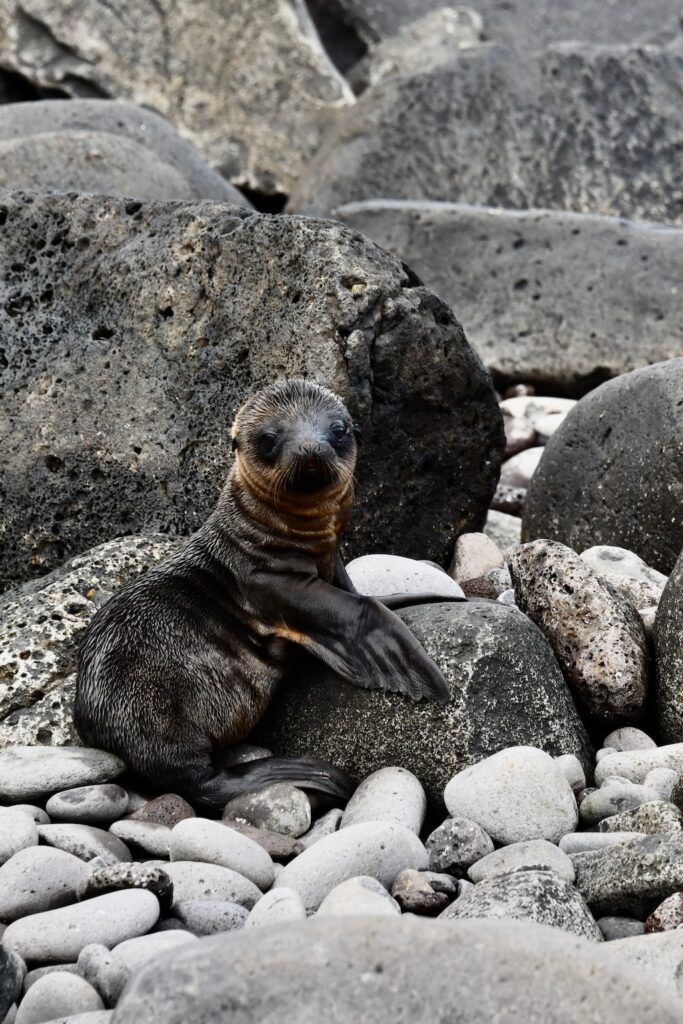
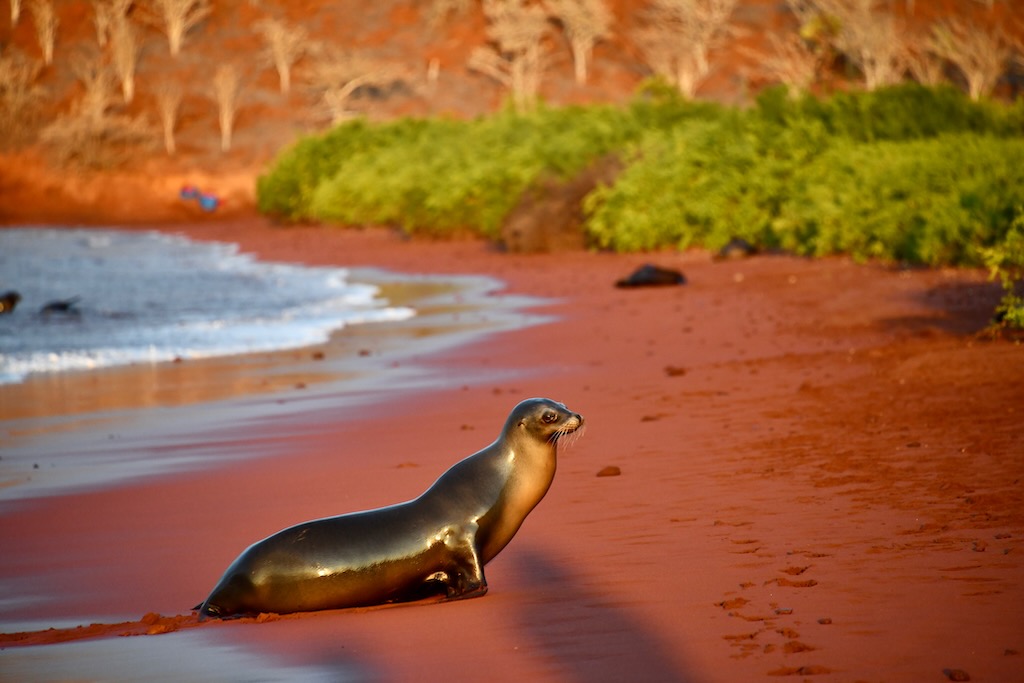
Rabida Island Sunset
The silky, soft, red sand on Rabida island’s beach is beautiful and relaxing. It’s no wonder that we found the beach filled with Galapagos sea lions of all ages – newborns, babies, moms, juveniles, lovers, alpha males, and aging elders.
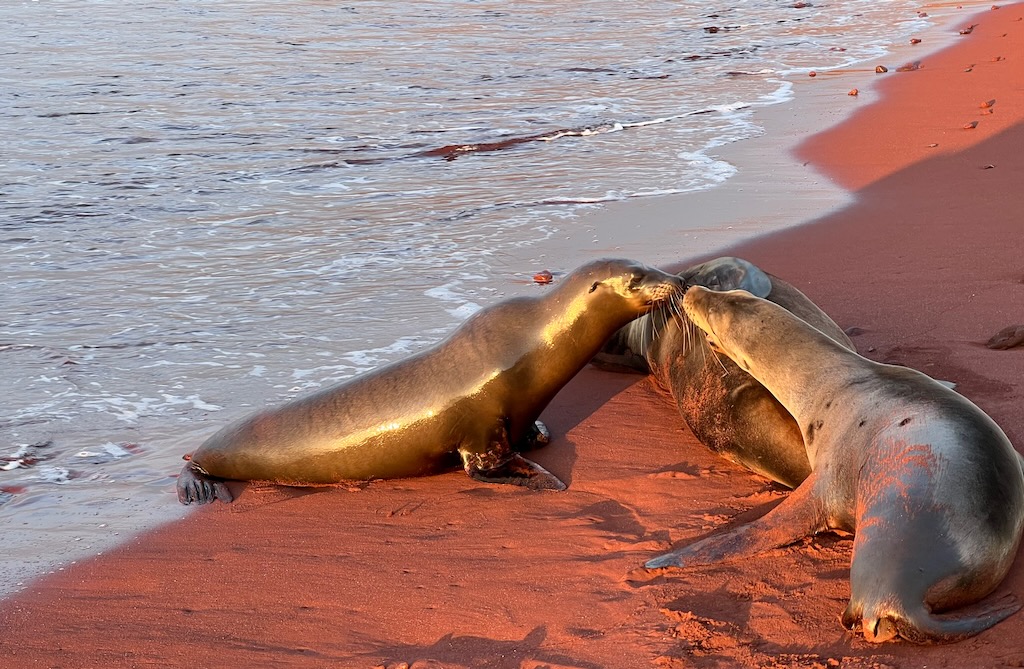
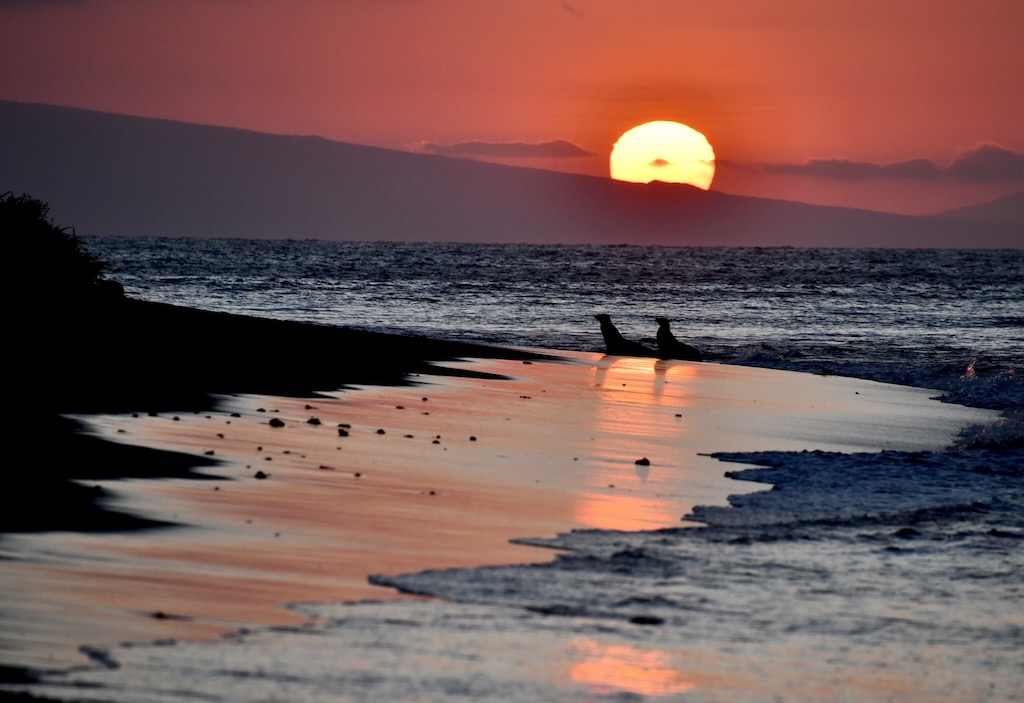
Here are some fun facts about Galapagos sea lions
- Male sea lions in Galapagos are much larger, up to 4 times that of female sea lions. Males also have a large bump on the forehead.
- Galapagos sea lions have brown/gray fur. The pups are chestnut brown and females are lighter in color than males.
- Sea lions have a smooth and streamlined body shape, perfect for hunting underwater. They can dive up to almost 2,000 feet and stay underwater for as long as 10 minutes. With their larger size, males are stronger hunters.
- As we saw, Galapagos sea lions spend a lot of their time in recreation – resting, socializing, or playing on beaches. They can also ‘gallop’ efficiently on land because of their pelvic girdle configuration. They can run faster than a person on rocky terrain! One time a male ran towards me, playful as a dog. I wasn’t prepared and jumped back. The poor guy got offended that I didn’t want to play, and retreated.
- Males fight other males to own territories on beaches, that are home to females. The stronger ones, have more land and hence more mates. As we saw, the male sea lions holding territories, can’t leave to go hunting because they must aggressively defend their space. They eventually get hungry, tired, and weak. At that point, they are ousted by other challengers.
- The losers form bachelor colonies, away from the female hangouts, where they hunt, eat, rest, and party. Once they’re stronger, they come back to win over land and mates.
- Galapagos sea lions typically mate between July and December, which varies by island. During our visit in August, the beaches were filled with pups on most islands.
- The newborn pup, bonds with its mother for the first week, developing a unique call to distinguish it from others. Initially, the mother starts to forage during the day and nurse the pup in the evening. In 5 weeks, the pup molts its baby coat and begins to feed inshore. The seal lion pup depends on its mother for sustenance, for a year.
Lava lizards are some of the most common reptiles in Galapagos. The females have a red throat and/or head. The males are brighter colored with yellow specks or golden stripes. The males span up to 400 sq meters territory, across many females territories. They are often seen doing push-ups to scare off the competition. If the other male is not intimidated by the show of power they may resort to tail slaps or biting aggressively, as if calling for a fight.

Galapagos Short-Eared Owl
We found the very elusive Galapagos short-eared owl as a surprise, at the entrance of a lave tunnel in a Cloud Forest hike on Puerto Ayora island. It was probably resting or scouting for Storm Petrels in a small dark cave. So, when the petrels exit, it can hunt the little swift bird in flight.
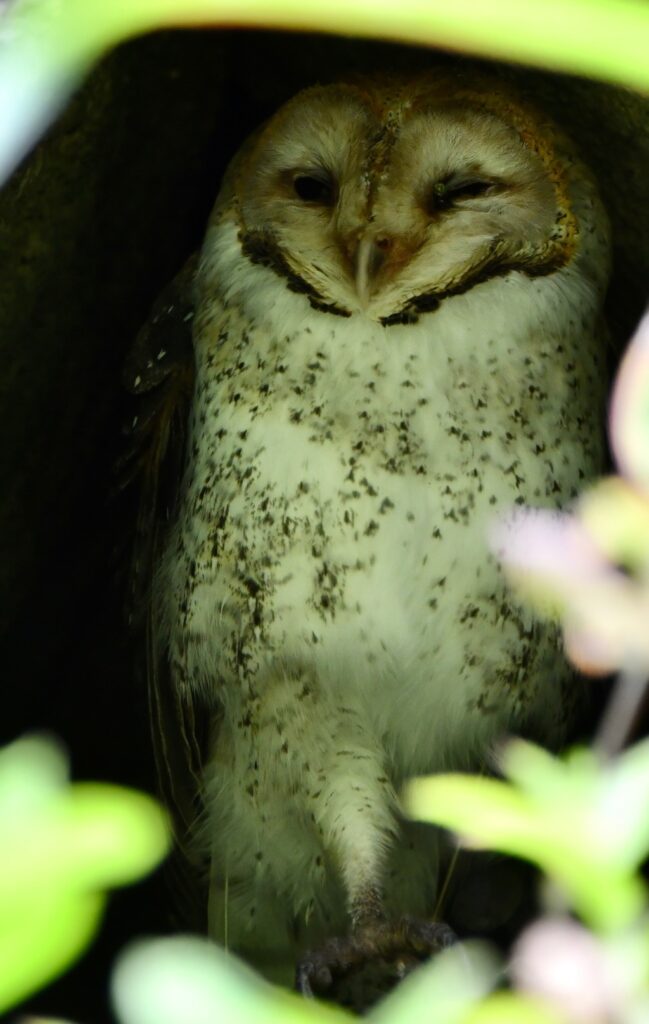
Despite a mere 16″ height, Galapagos Short-Eared Owl are very powerful flyers and formidable hunters with a huge wing span of 1 meter. With their acute eyesight, excellent camouflage and swift speed, they make lethal hunters of small rodents, birds, and even blue footed boobies. Happy Gringo has some fun facts about the specific adaptions on the Galapagos endemic species.
Giant Tortoise of Galapagos
Galapagos was home to 16 species of giant tortoises. Many of them can live for some 175 years, growing in size for their entire life! One of the tortoises taken by Darwin passed away just recently!
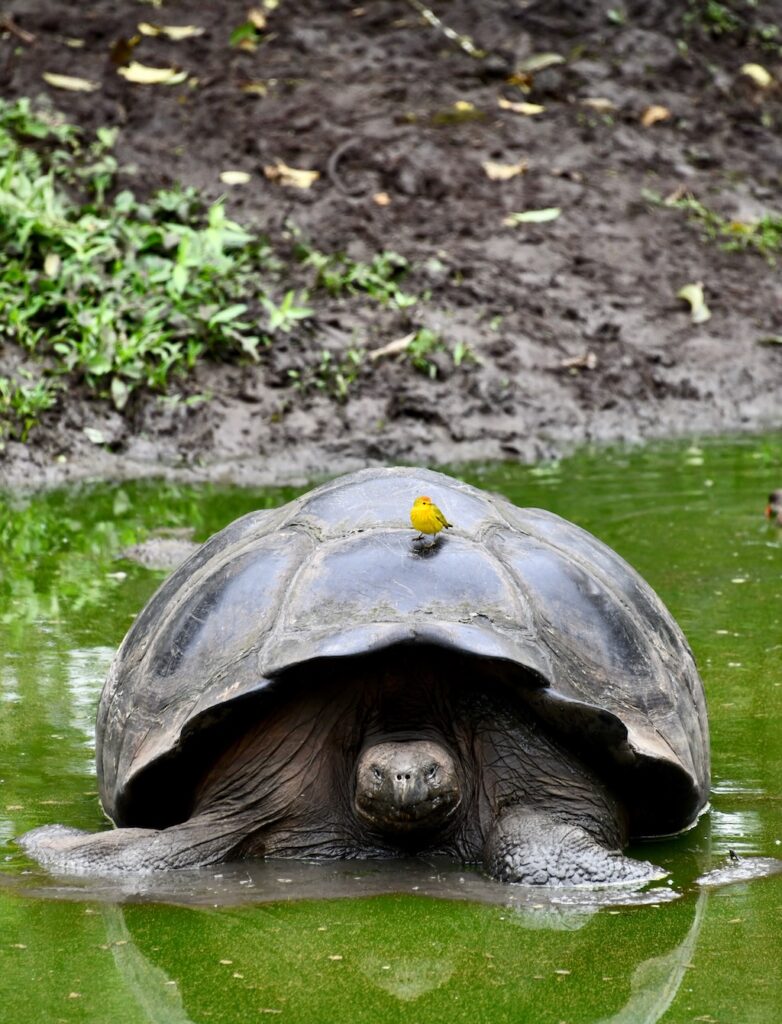
Galapagos giant tortoises can survive without food for many months, just on their large fat reserves. So, sailors ruthlessly gathered them in thousands for fresh meat on long voyages. The drove the tortoise species to extinction or near extinction by early 20th century. Today 12 tortoise species have survived, thanks to the remarkable preservation and rehabilitation efforts on the Galapagos islands, along with the Darwin Research Station.
We found two major kinds of giant tortoises in the Galapagos – the short, dome-shaped and the tall saddleback kind. You can see the distinction below –
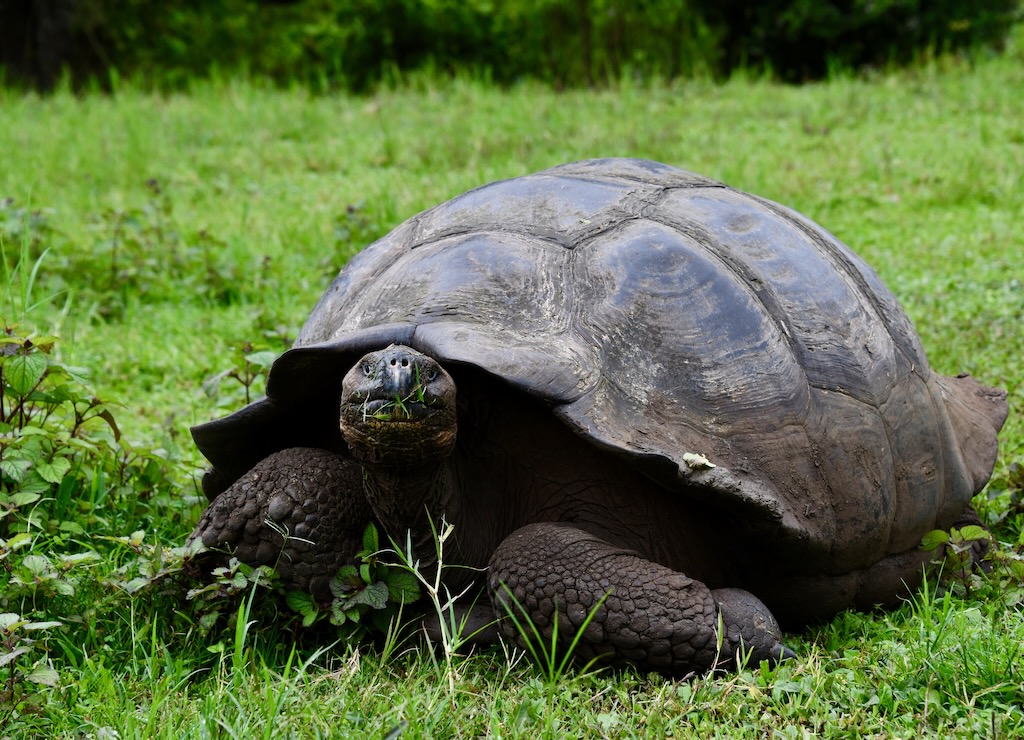
The cloud forest on is on a higher elevation, towards the center of Puerto Ayora. The island is covered with forest and lush green vegetation. The short, dome-shaped giant tortoise freely walk about the farms and green pastures. These species are short and dome-shaped because of the ready availabity of food.
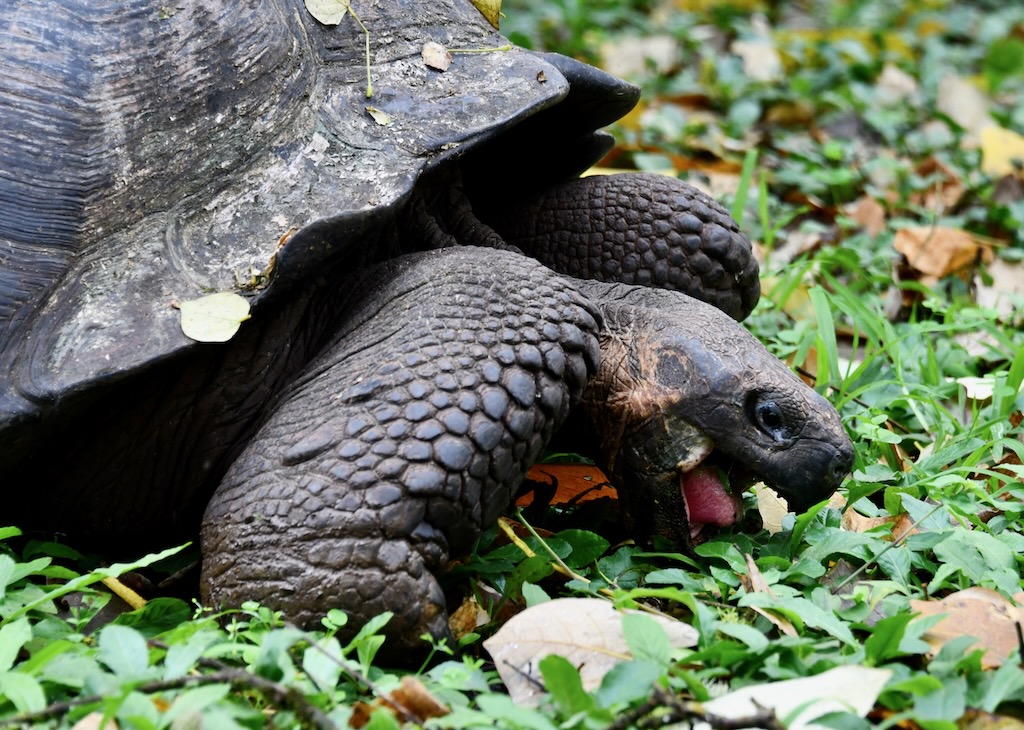
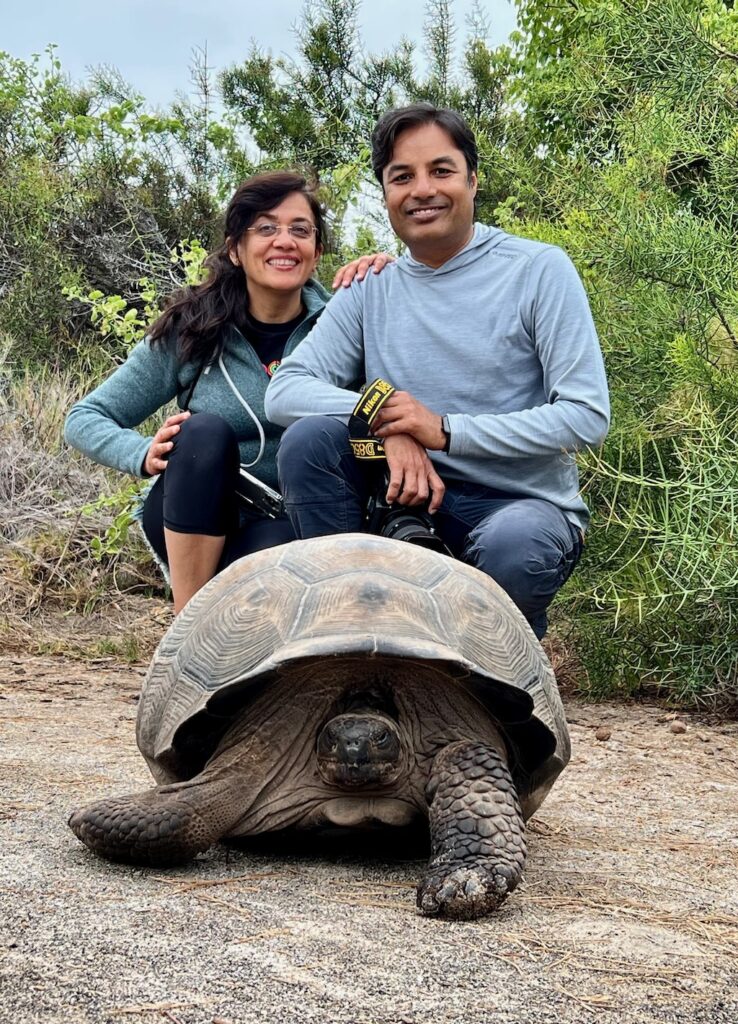
The tall saddleback giant tortoise are only found in the Galapagos. The tall legs and neck adaptions were necessary for them to survive in the desert habitat where food is scare and hard to reach, usually on tall cactus trees.
One of the tall saddleback species was known as Pinta. The Charles Darwin Foundation and Research Station has an exhibit of stuffed George, the last Pinta to live on the planet. Sadly there were only known 3 Pinta tortoises in 1906. George was found on Pinta island and brought to the center in 1971. After years of human effort to find a female to procreate with, he eventually died in 2012. Maybe one day, science can create a Pinta tortoise from George’s DNA.
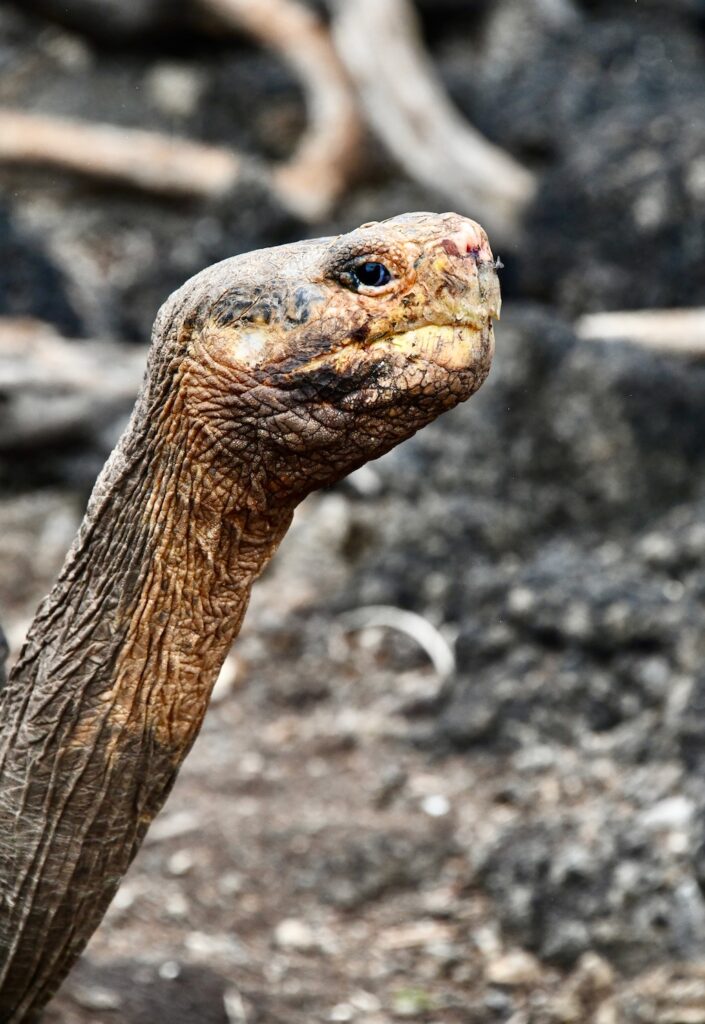
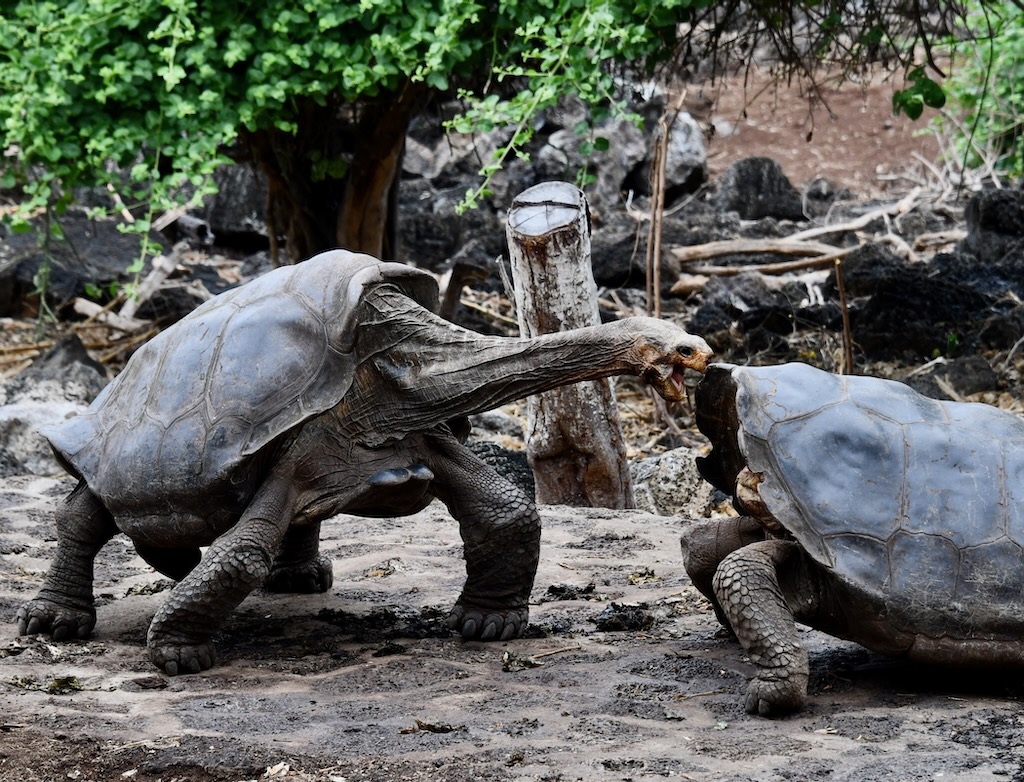
The Blue-footed Booby has captivated the human imagination for centuries with its mating display, a dance routine showcasing the webbed baby-blue feet. Why showcase the feet? Because the feet show nimbleness? Maybe. But mostly, males with more intense color are more desirable because the color intensity indicates health, immune system, and the ability to get more food.
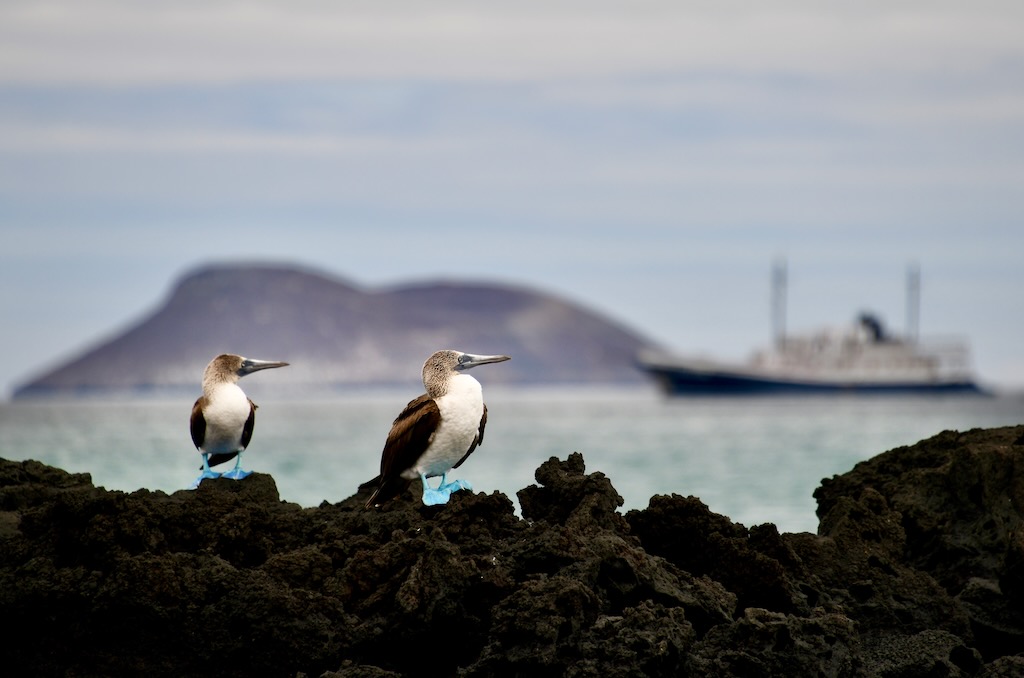
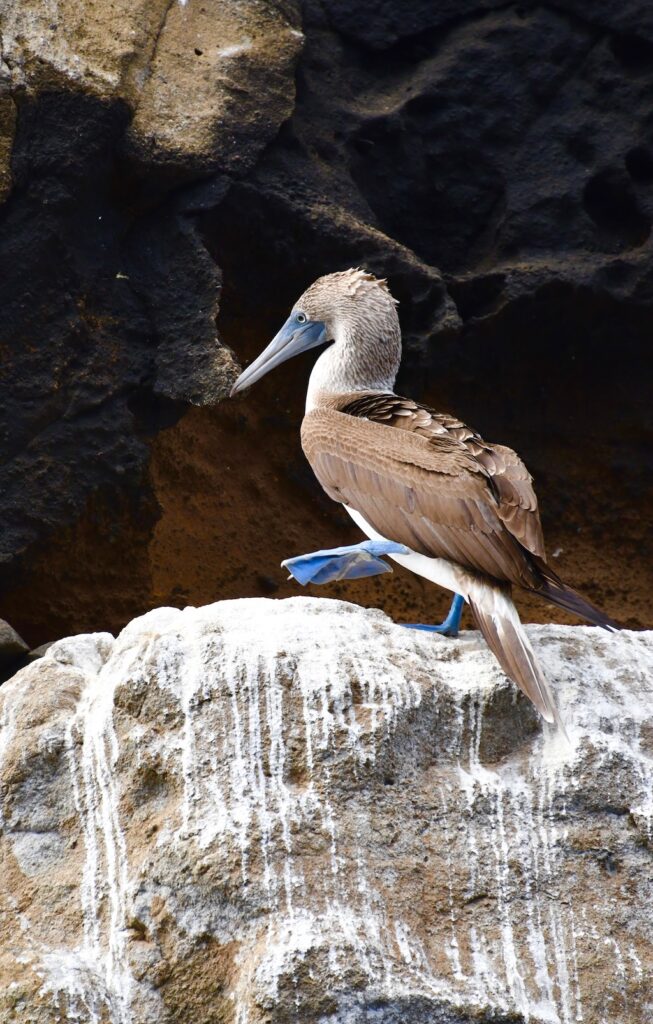
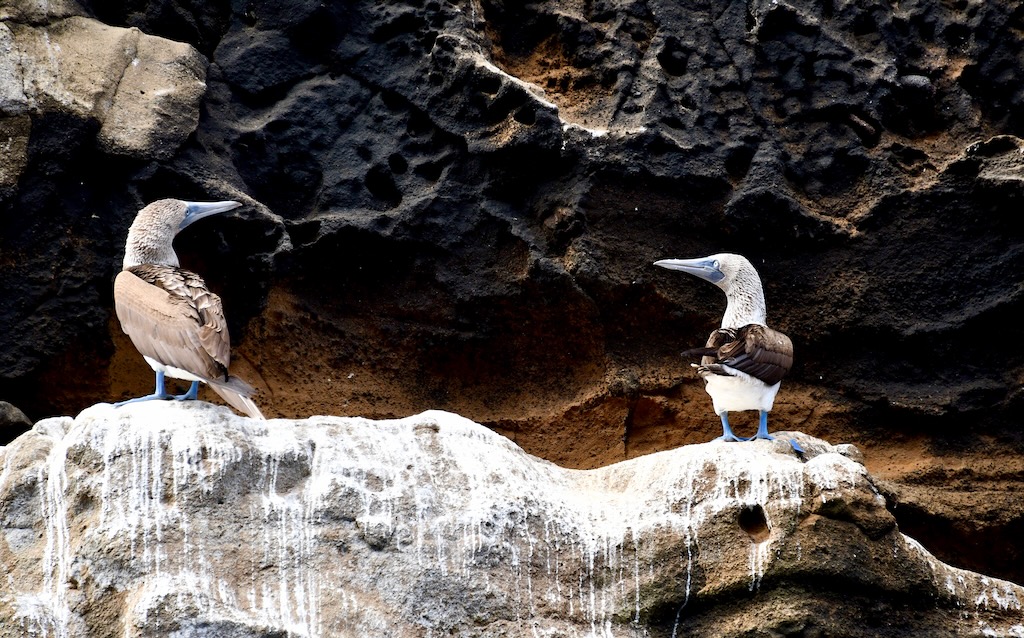
The Galapagos Blue-footed Boobies mate every 8-9 month, mostly from a mongomous relationship. They lay eggs on bare ground and even poop right on the egg, thus surrounding it with a wall of excrement. They lay 1-3 eggs with about 5 days gap between each offspring. So, the older one is stronger, more aggressive of the siblings. It gets fed first and the younger one is fed whats left. However the younger egg is larger and so the chick has a head start. Because of their unique sibling staggering style, Blue-foot boobies have been a key research topic on sibling rivalry, parent-child preferences and survival. I found research findings from sibling rivelary, siblicide, parental prefernce, survival to be absolutely fascianting and totally relevant to humans as well. The findings are summarized in wikipedia and other sites.
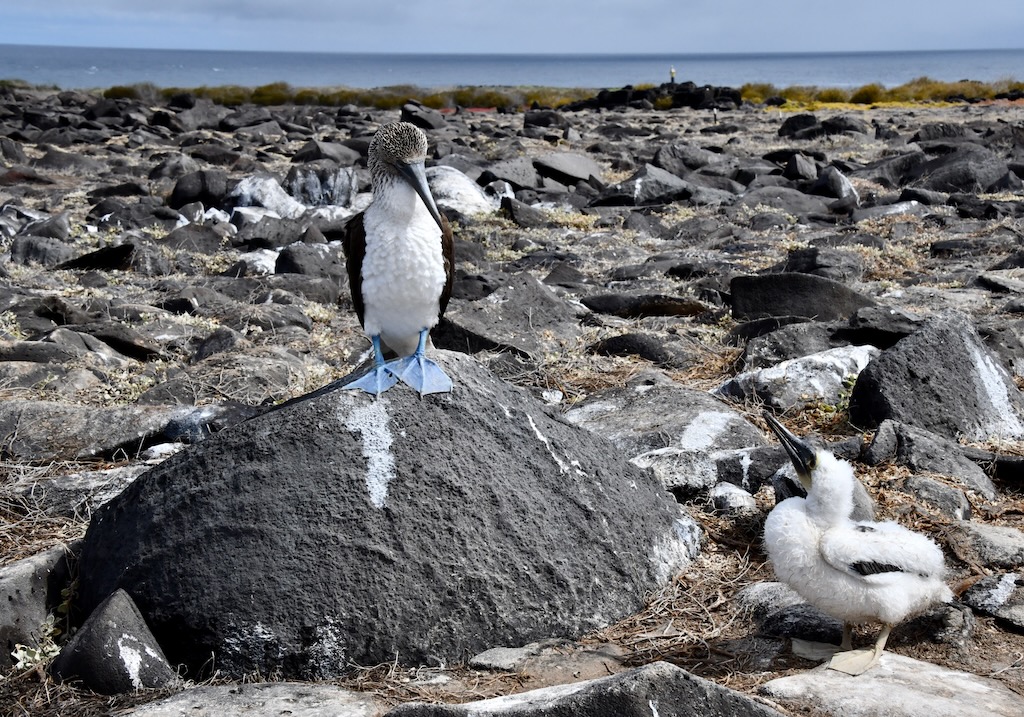
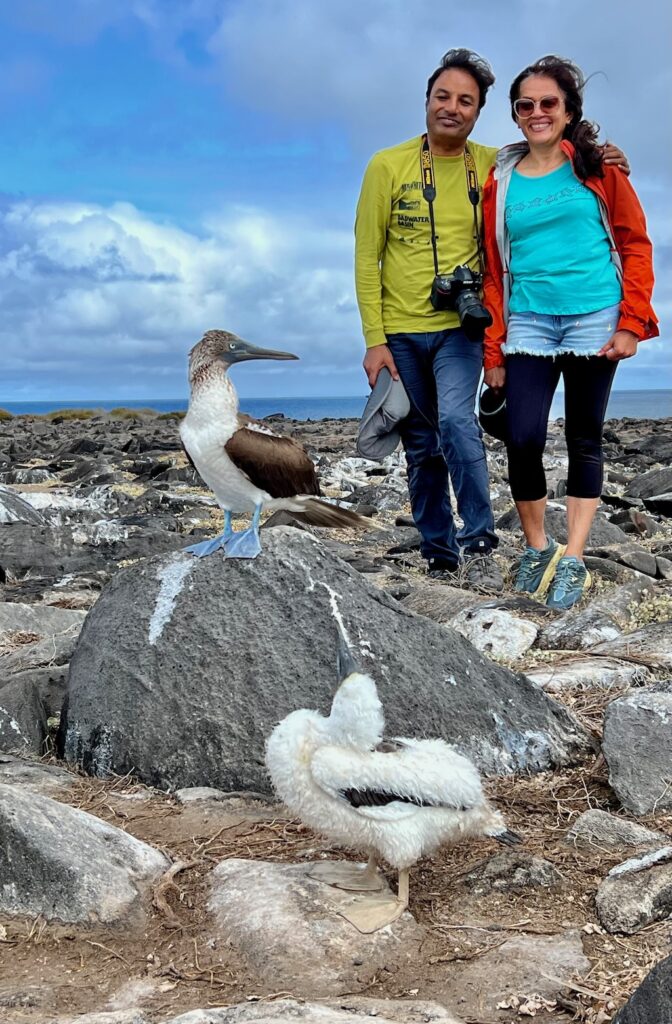
Blue-footed Boobies live exclusively on a marine diet. How they go fishing is quite unique! They take a spectacular dive straight from the sky into the water to grab the catch. They dive at upto 60mph from over 20meter height, catching their prey in serrated bills. Their brain is protected from high impact by a special air sack in the skull. Their nostrils are permanently closed, which helps in making them excellent divers. Plus they can swim underwater easily. Its quite a sight when hundreds on them dive at once, and then feverishly ensure their catch.
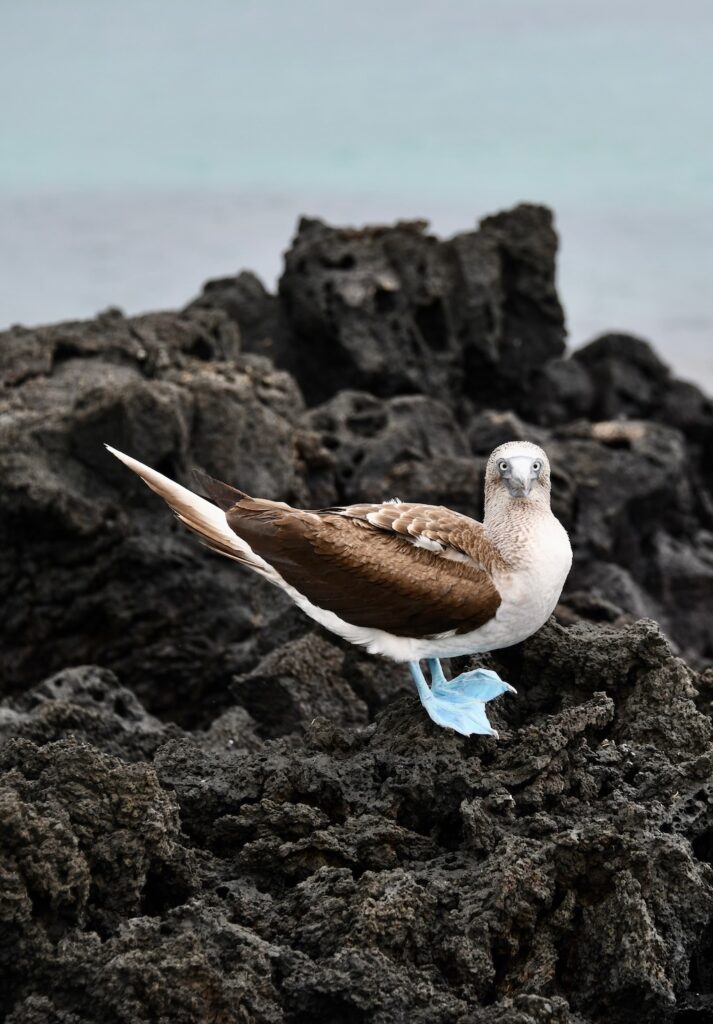
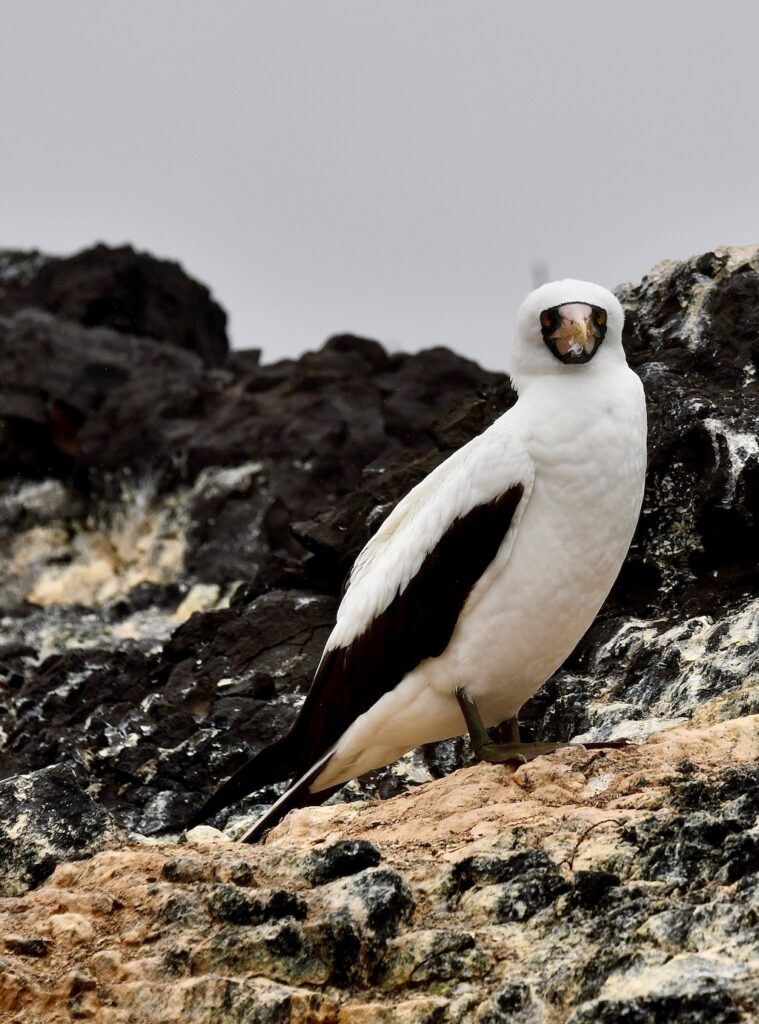
Galapagos Nazca Booby
Nazca Booby is one of three species of booby found in the Galapagos. It’s usually seen between islands. but can be seen in Punta Suarez on Española, Punta Pitt on San Cristobal, or Genovesa during egg-laying season.
Nazca boobies are known to practice obligate siblicide, where the weaker sibling is killed by the older one or dies from weakness.
Galapagos Frigatebird
We saw the frigatebirds surfing over ships. They are so light and efficient that they can fly for days with no rest. We saw two species of frigates in the Galapagos: the Magnificent and the Great frigate. The former being endamic to the islands.
Since frigates are not waterproof, they rely on leftover food, stealing or chasing other birds until they throw up. For courtship ritual, males inflate their red chest globes to attract females (photo below).
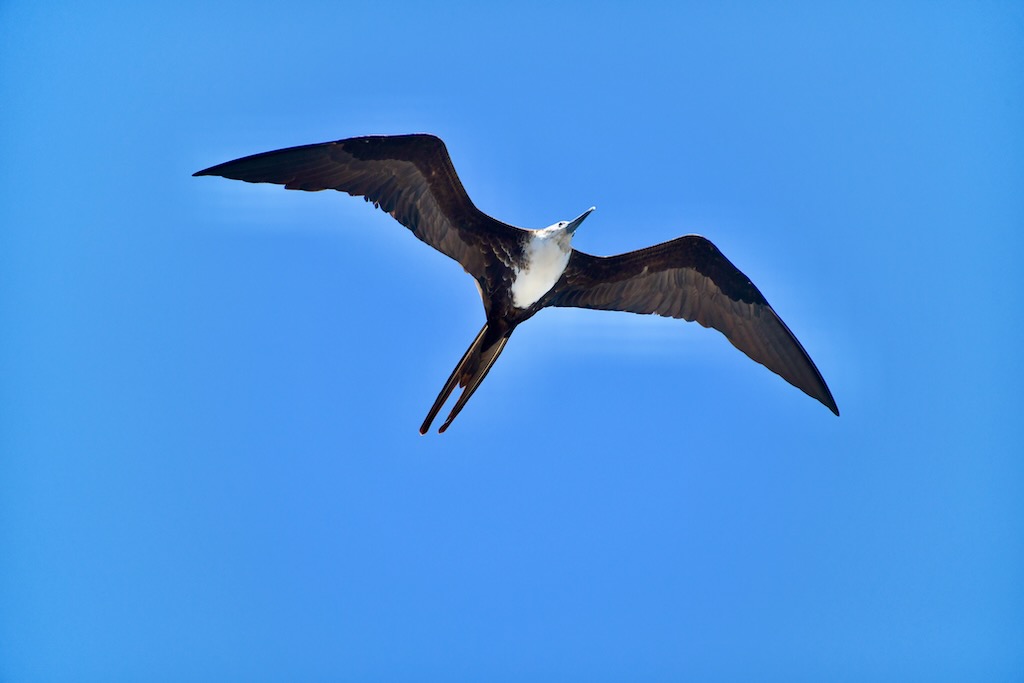
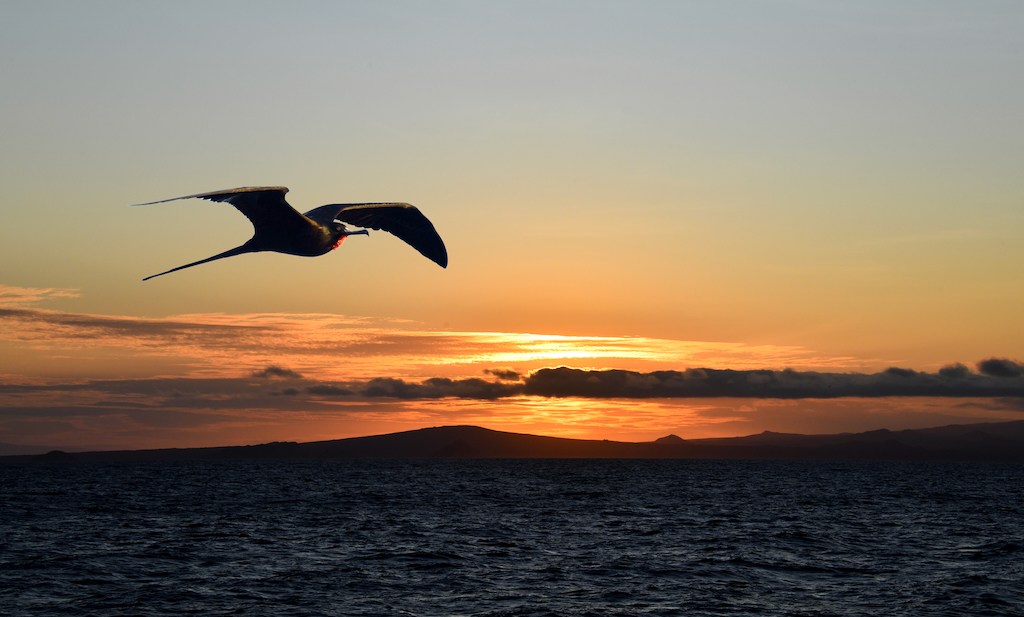
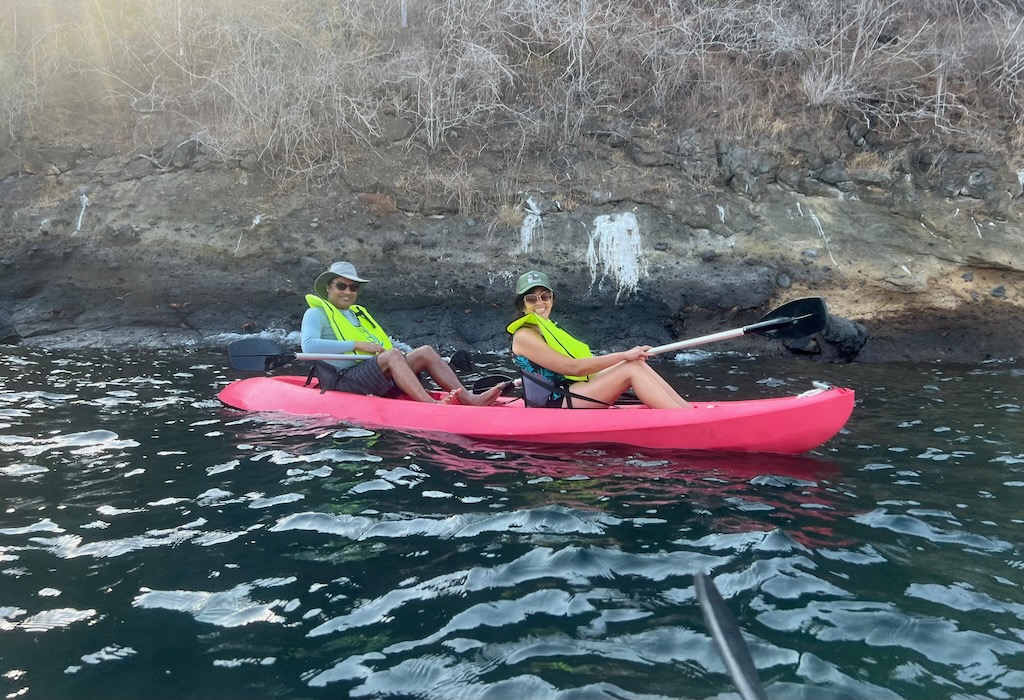
Galapagos Brown Pelican
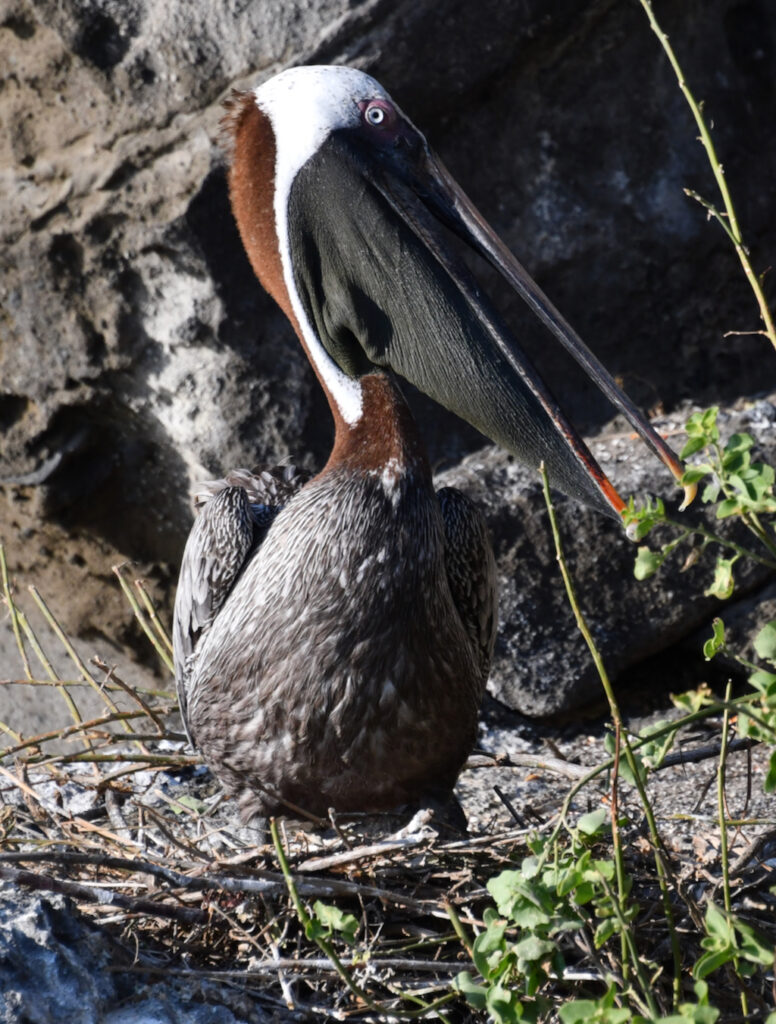
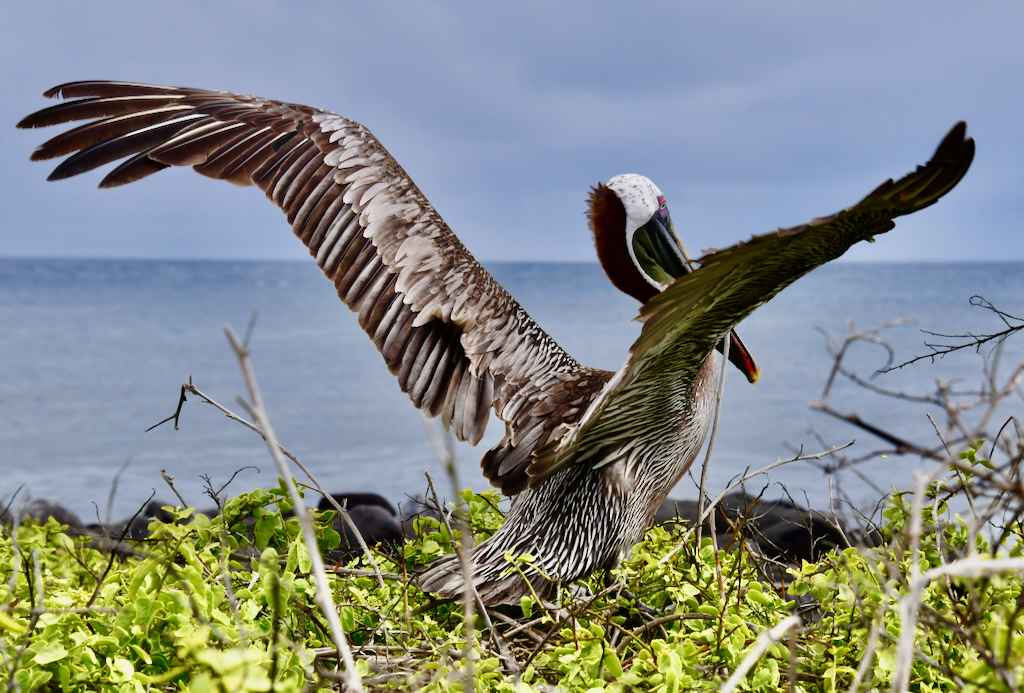
Galapagos Lava Heron
Galapagos Heron is a small, wading bird that lives in lava rock coastlines, saltwater lagoons, the and mangrove forests of the Galapagos. They are endemic to the Galapagos Islands. They are usually all gray, but during the breeding season, their legs change to a bright orange color.
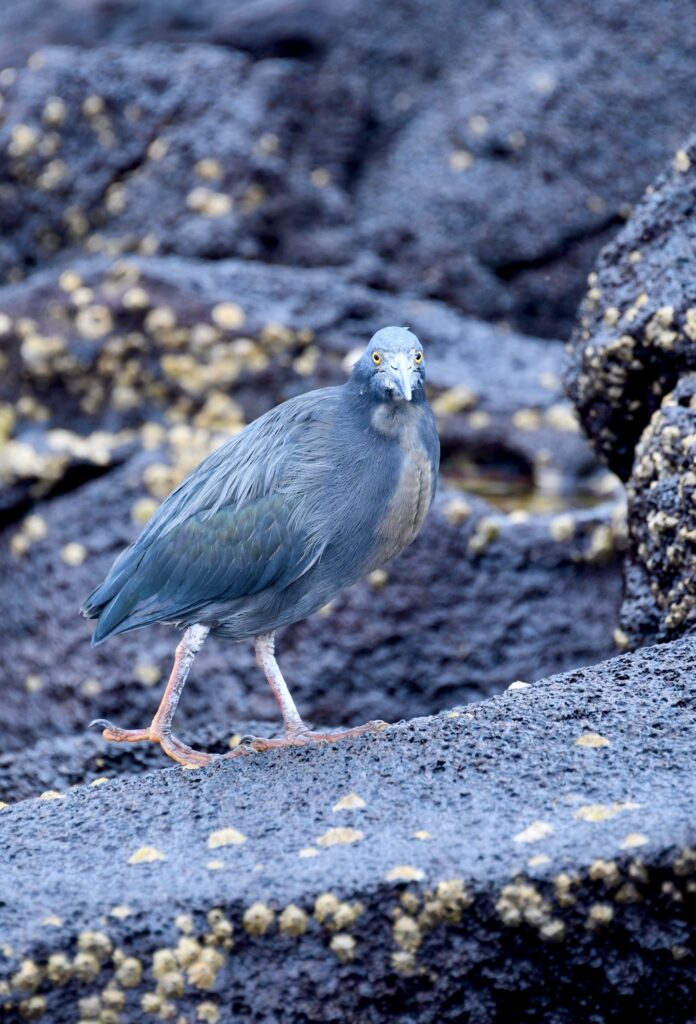
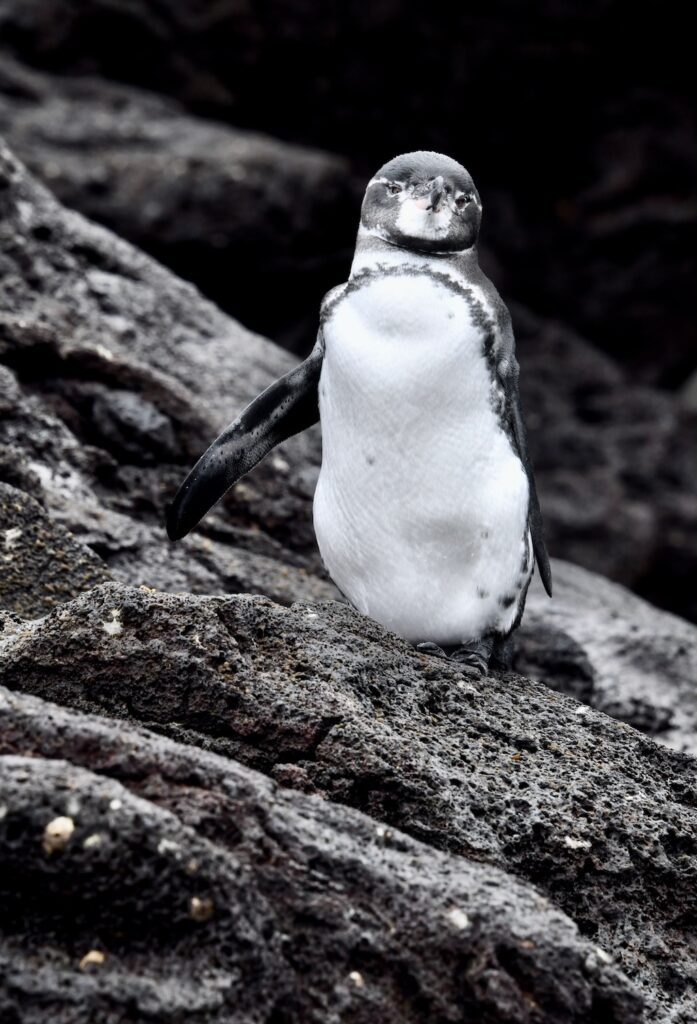
Galapagos Penguin
Shocking, but yes, penguins live on (and north of) the equator, and the Galapagos penguin is the only species to live on these latitudes. They are the 2nd smallest species of penguins at about 20 inches in height.
The Galapagos penguin species originates in South America but has since dwarfed and developed adaptations to adjust to a warm climate and food scarcity in the Galapagos. They mostly live around Fernandina Island and the west coast of Isabela Island where they feed from the cool waters of the Humboldt and Cromwell Currents. These currents bring rich nutrients and cold temperatures from the depths of the ocean. Galapagos penguins can live for 15-20 years if not killed in the wild.
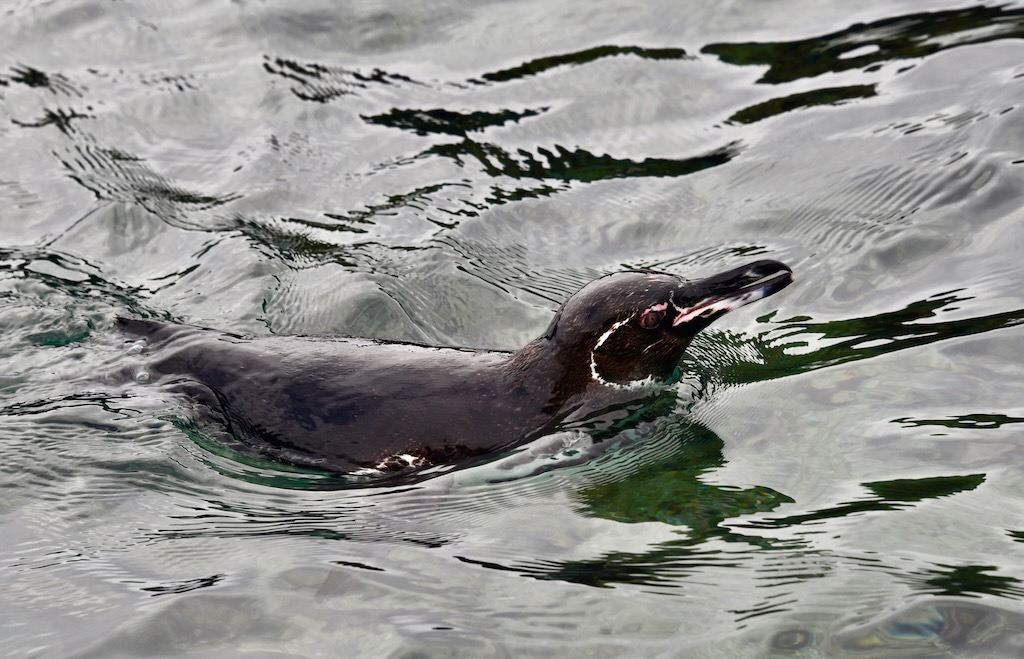
Galapagos penguins are the fastest swimmers that I’ve ever swum with. They zoom by like torpedos under water. At night, they rest for hours on rocks, keeping cool with their fan-like adaptation. They’re hard to see underwater because of their speed and low visibility in the Humboldt and Cromwell currents, which are loaded with foods.
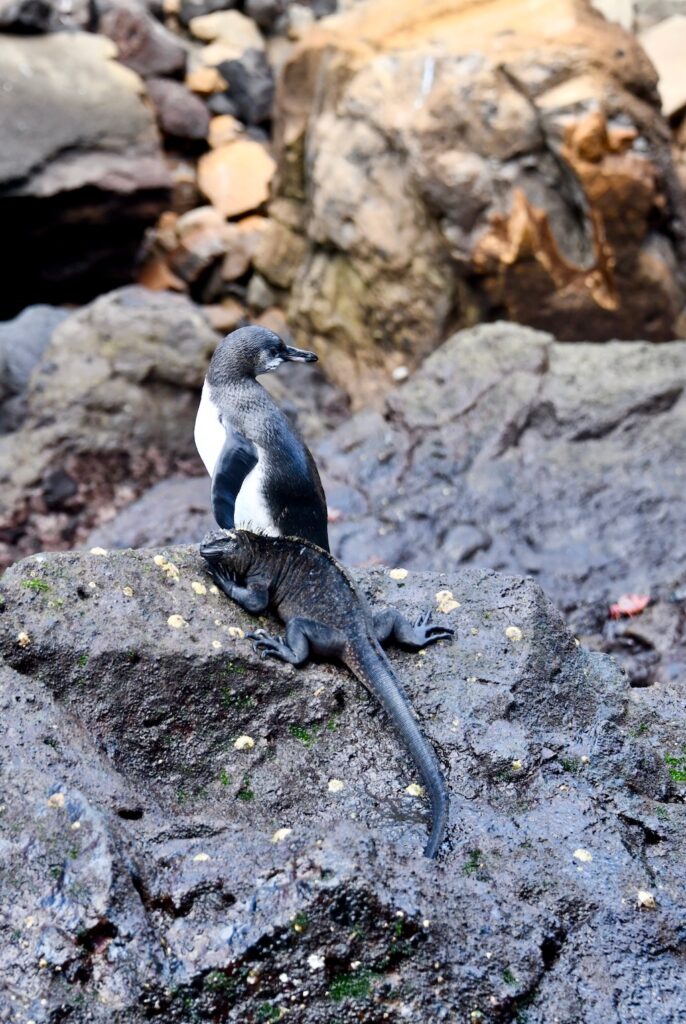
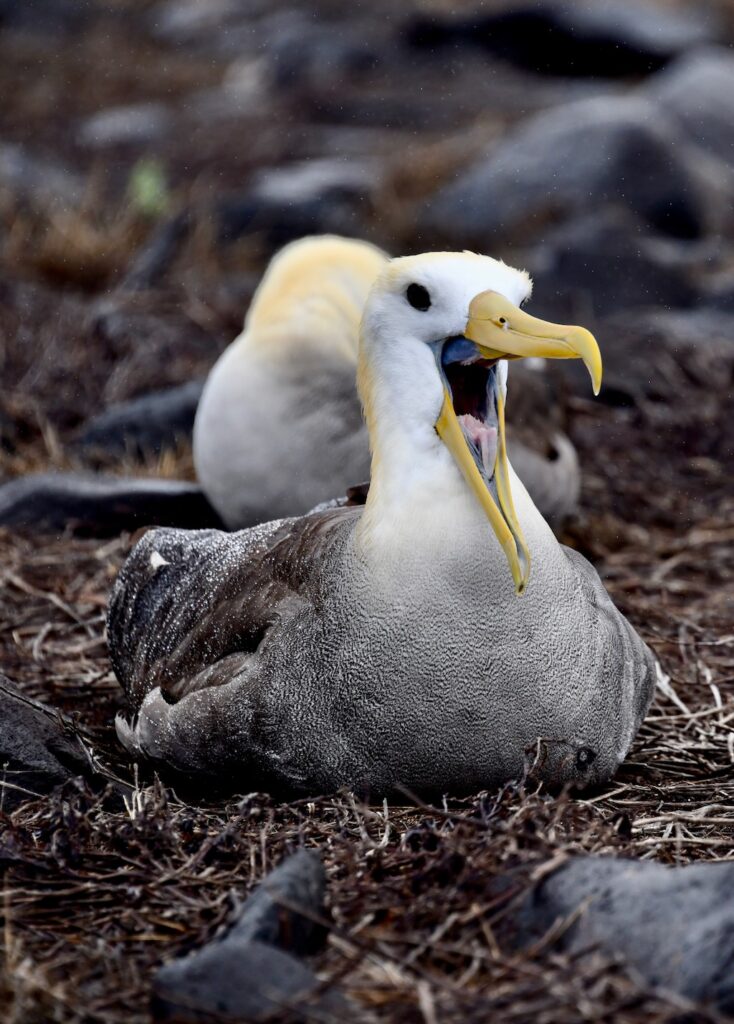

We got to see the stunning Galapagos Albatross on the Punta Suarez walk on Espanola Island. It is thought that some 20,000 pairs breed and nest on Espanola Island, but the population is rapidly declining. They hang out on the flat rocky surface between April and December. These are the only albatross to live in the tropics. Espanola island boasts an Albatross takeoff runway – every photographer or birder’s dream.
Albatrosses are famous for their majestic flight as we saw in Antarctic’s and New Zealand. With their huge size and 7.2-8.2 feet wingspan, Galapagos Albatross are easy to spot and observe in their native habitat. In Galapagos, my favorite part was their elaborate courtship routines. We saw 5 males fighting for a female. One at a time each loser would bow down and curtsey, one at a time. They did a great deal of bill clacking, bill circling, and head nodding. Their bird waddle was elegant and comical at the same time. Once engaged, Galapagos Albatross mate for life, until death do they part.
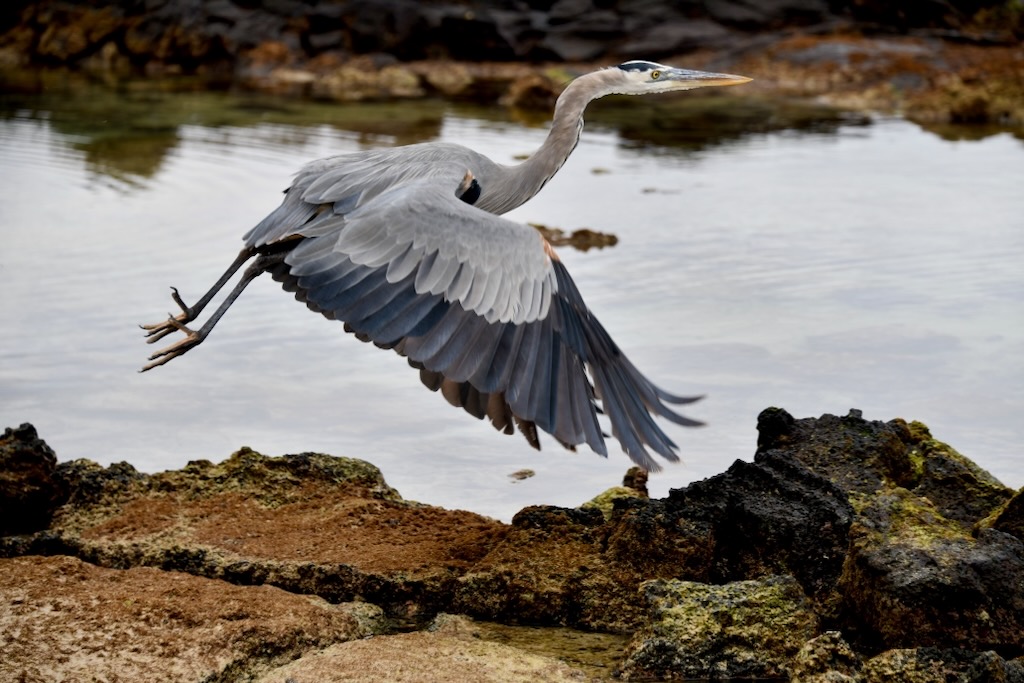
The Galapagos Great Blue Heron are one of the largest herons on Galapagos islands. They grow up to 4.5″ in height and live up to 15 years. They are generally solitary and are found along the island shores of the Galapagos, spearing fish with their sharp beak.
They breed all year and lay 2 to 6 eggs, typically on mangrove branches or rocky patches, safe from predators. The eggs incubate for about a month. The chicks can self-survive at two months of age.
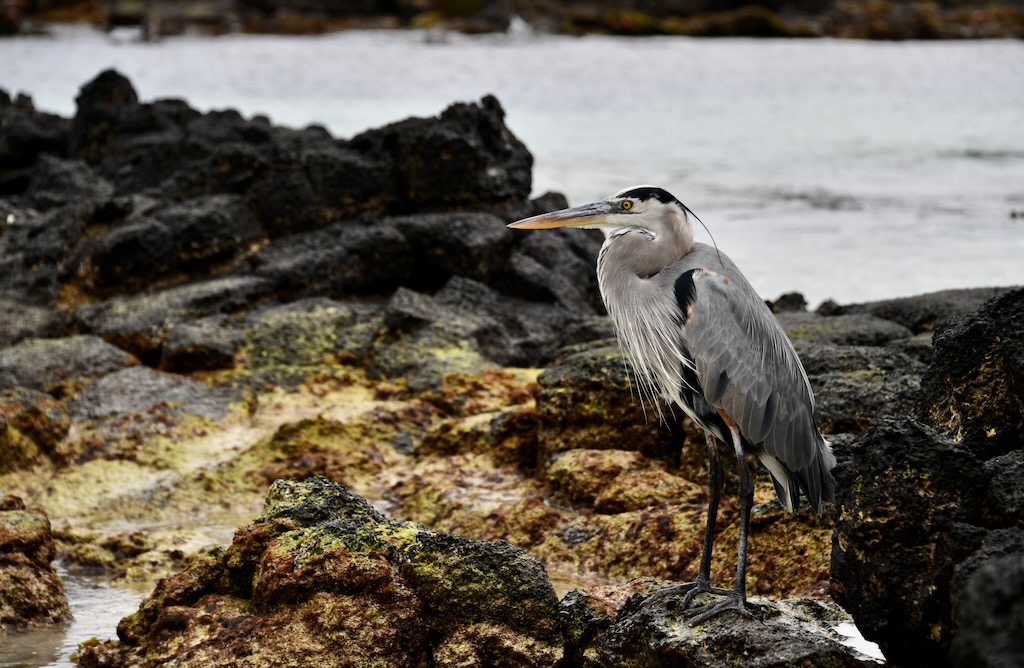
The Great Blue Heron stood on one foot, neck curled in, intently focused for many minutes. Occasionally, it elongated the graceful neck or put the second foot down, gently. It acknowledged us and flew off.
Galapagos Swallow-tailed gull
This is the only fully nocturnal gull and seabird in the world.
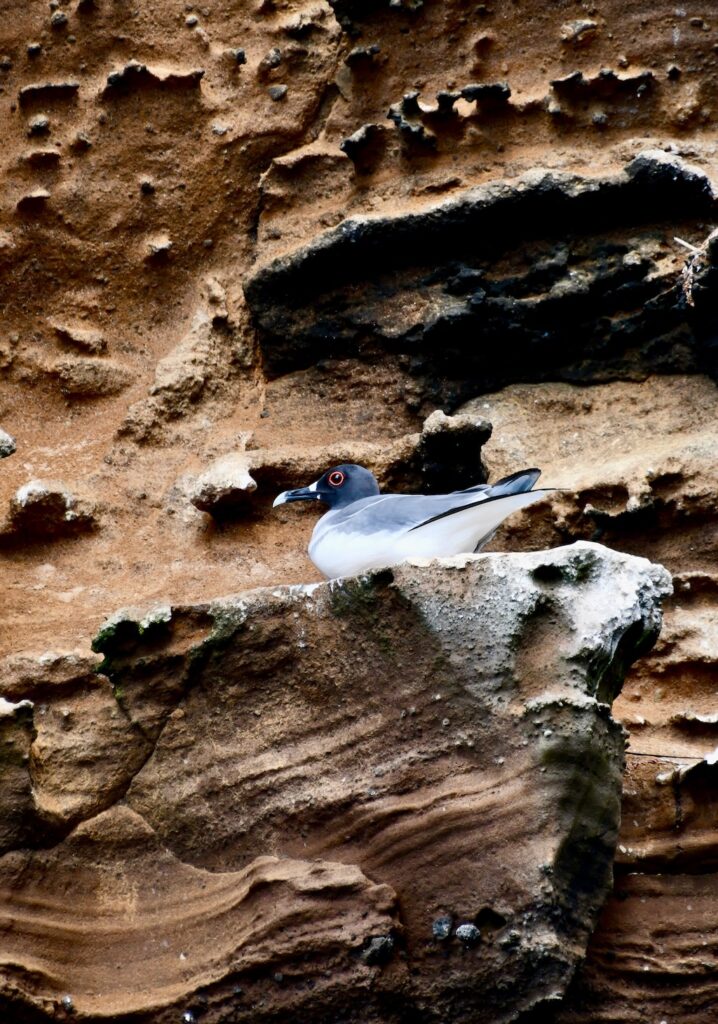
The swallow-tailed gulls leave shore as a noisy group to prey on squid and small fish that rise to the surface at night to feed on plankton. They live mostly on the eastern part of the island where the water is warmer.
Galapagos Doves
Galapagos Doves are a great example of quick evolution in the face of adversity. When British sailors first arrived in 1685, these doves showed no fear. They came out in flocks, which made them easy hunting targets. Since then, they have adapted to avoid human interaction.
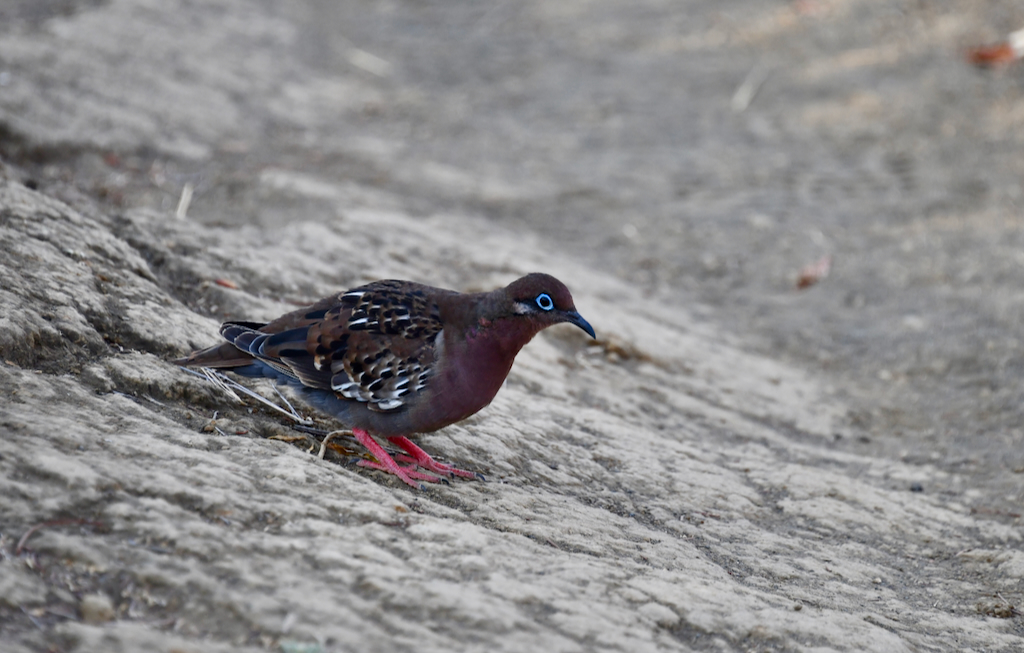
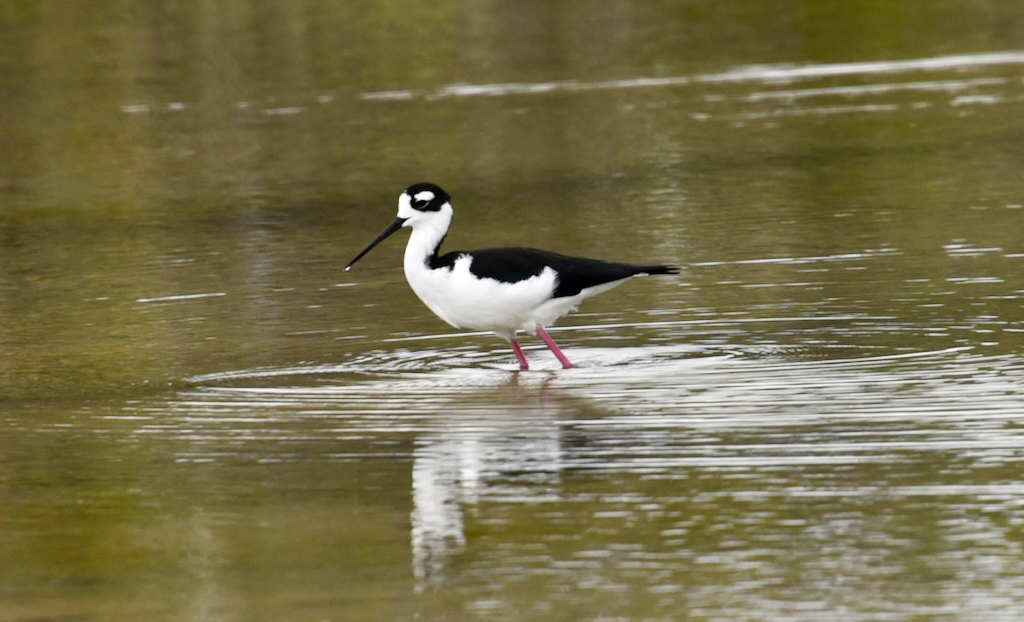
Black Necked Stilt Bird
We saw the Black Necked Stilt Bird hanging out with Galapagos Flamingos but they can be found on most islands in shallow waters. They have black wings, mantle, hind neck and crown on top, over contrasting white under parts, rump and tail. They fashion extremely long, pink leg, like fashion models in the wild.
Sally Lightfoot Crab
Gorgeous Sally Lightfoot Crabs can be seen in large numbers on most beaches of Galapagos. They keep the beaches clean from organic debris by eating pretty much anything.
They say that Sally lightfoot crab is named after a Caribbean dancer, due to their ability to run in any direction, jump from rock to rock, and climb vertical slopes.
Adult crabs have designs of intense red, orange, blue colors on their shells, with a light blue underbelly. Younger crabs have a darker color with red spots, which become larger with each moult of their shell, until they get the bright colors.
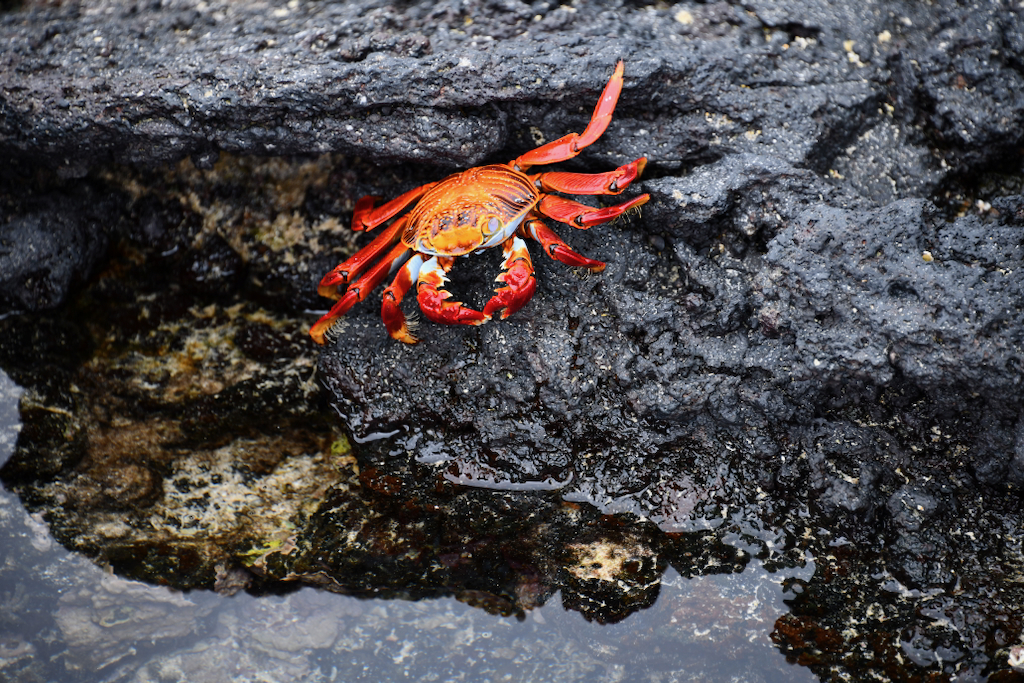
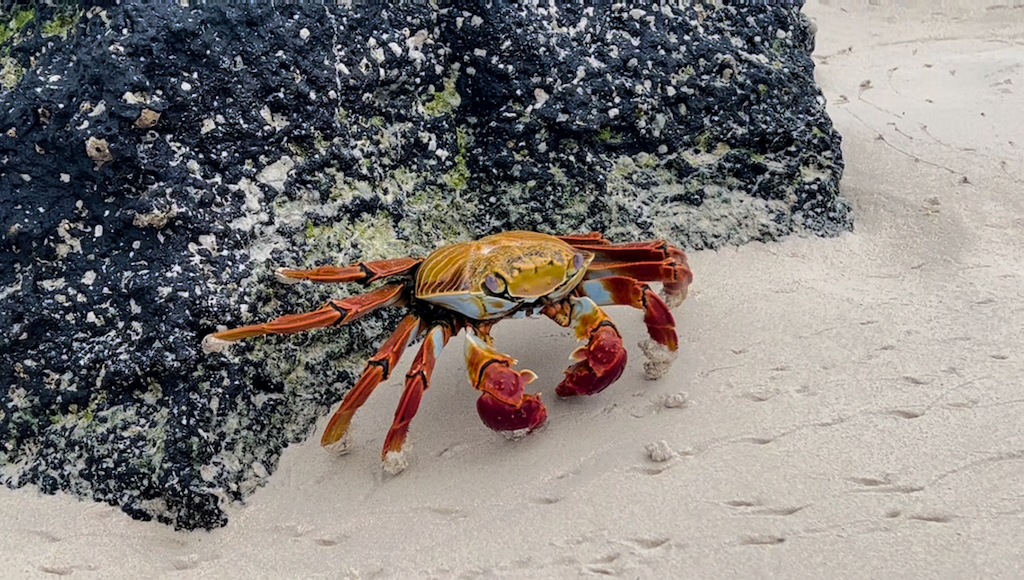
Sally Lightfoot crabs undergo metamorphosis to evolve from larvae to crabs. Mama Sally Lightfoot crabs carries the eggs on her stomach until they hatch into the water. The larvae then swim out to deeper waters, where they feed on phytoplankton. After few of quick moults, the larvae turn into young crabs and swim ashore, where they scavenge more food and grow with each moult. Juvenile crabs travel in large groups and later go solo when they start mating.
Crabs are the most plentiful and entertaining creatures to watch in the Galapagos. They like to hide in cracks in rocks when resting. But, if disturbed, they may spray water or shed one of their legs! They seemed to play tag with, sometimes chasing and other times scurrying away from me. It was so much fun!
These are just a few of our wildlife experiences in the Galapagos. There is so much more to these islands where the most unusual organisms have adapted, survived, and are calling the Galapagos home. Much of the credit of preservation goes to the conservation efforts of the people of Ecuador who are working so hard to reverse population decline and extinctions. We owe them a lot for all their work.
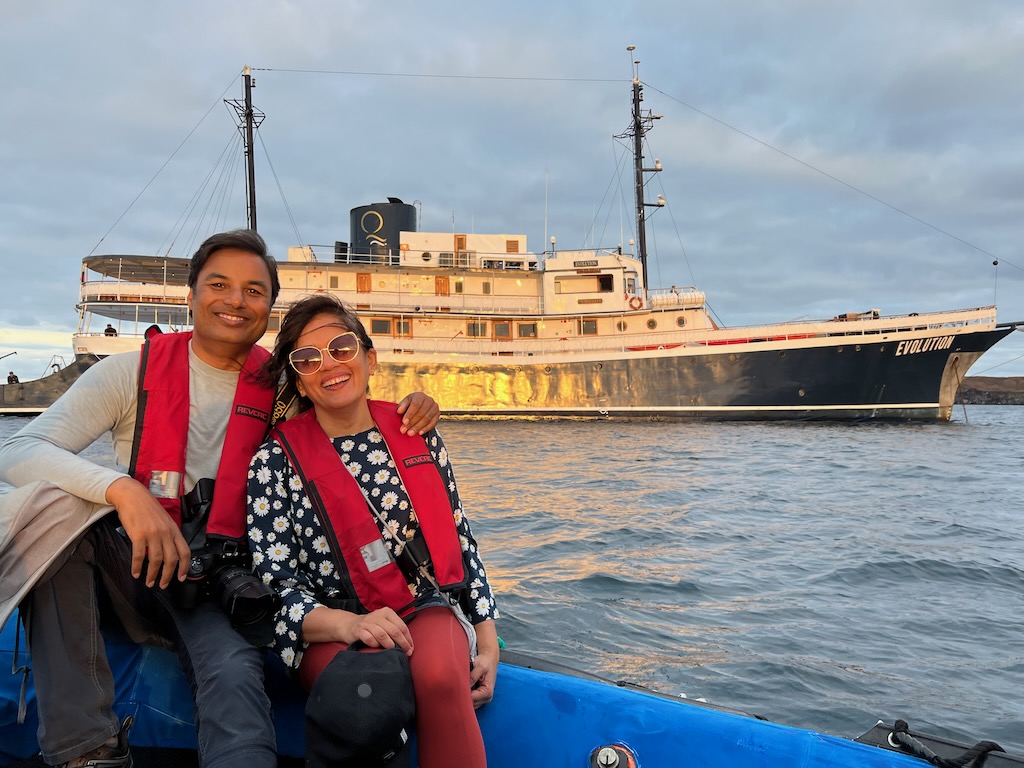
Galapagos was a once-in-a-lifetime bucket list destination for us and the Quasar crew made it unforgettable. Meeting nature’s creations – animals, plants, birds, and marine life, in their natural habitat was truly awe-inspiring and humbling us. Please share your most incredible experience below. We’d love to hear all about it.

